SCIENCE 3
PRIMARY
The keys to Global Thinkers Materials for this level

Teacher’s Guide Digital Project
Inclusivity Assessment
LOMLOE Regulations







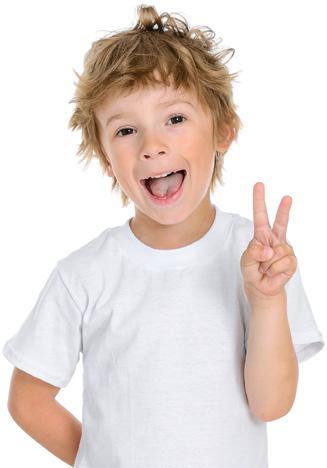













thE keyS to gloBal tHinKErs


kills

Pupils’ learning must be directed towards acquiring abilities and skills that allow them to successfully navigate different situations in their academic, personal, family and social lives and in the long term, their working lives.
This requires an educational project whose goal is to contribute to pupil’s acquisition of content or knowledge, whilst providing them with everything they need to apply them to different contexts.

SThe Global Thinkers project provides a wide variety of activities that allow pupils to apply their knowledge, abilities, skills and aptitudes in an integrated and practical way.


These activities support the transference of learning and its application in diverse and interesting contexts.







LEARNING EXPERIENCES
Learning experiences are now included in the new educational law (LOMLOE). The activities begin with a problem has got a certain level of complexity and is contextualised. In order to resolve it, pupils have to put the content that they have learned into action, using all of their knowledge and skills, in an integrated way. Learning experiences put acquired learning into practice in a critical, reflective and transformative way.
WHere can thEy Be fouNd?

Each unit of the Pupil’s Book opens with a learning experience that is, a problem framed within an SDG, that invites pupils to carry out a


final reflection. This learning experience requires pupils to draw on the basic learning raised throughout the unit.

COMPETENCE-BASED ACTIVITIES
Competence-based activities are authentic activities. They provoke applied learning with a transformative impact within the social sphere, the educational community, families and individually. They start out with a problem that doesn’t necessarily have one single solution. They promote analysis, justification, prediction, argumentation, interpretation and revision. Therefore, they are activities that are not only focused on knowledge, but also on know-how and the development of skills.
WHere can thEy Be fouNd?
They are present in each unit’s different activities. In all cases, pupils will apply some of the learning acquired in a practical way. To do this they will need to carry out inferences, conjectures, inquiries and reflections.
I D on’T WA n T To DISAppEA r!
Our ecosystems are in danger! Air pollution is a big problem! The Earth’s atmosphere and the seas are also getting warmer. This is called global warming. All these things are causing climate change.
Some species of living things are extinct. Other species, like the Greek tortoise in Almería and Murcia, are endangered. Fires, uncontrolled urbanisation and unsustainable farming methods are some of the causes.


You can easily locate the competence-based activities in the book; they are highlighted.
2 Relationships in ecosystems
HoW
1 Look at these endangered animals. Match each description to the correct animal and the correct question.
Do LIVInG THInGS InTErACT WITH THE ECoSYSTEM?
How do living things interact with other living things?

Javan rhinoceros

Humans take my horn and use it for medicine.
Pacific Ocean Polar bear Arctic

I suffocate from eating plastic in the sea.
Indonesia
I can’t hunt for food because the ice is melting.
1 Look, listen and read. There are different types of relationships between the living things in an ecosystem. The most important ones are feeding relationships.
Plants are food for the grasshopper.
Food chains represent who eats who in an ecosystem.
The grasshopper is food for the lizard. The lizard is food for the eagle.
Your turn!
What animal is it? Where does it live? Why is it endangered?
EVErYTHInG IS ConnECTED
2 Make cards with the pictures of the animals and the information about them. Then, tell your classmates about them.
Materials
1 Look and do the activities.
3 Brainstorm ideas and make a poster with five tips for reducing damage to the environment.
To learn how to create digital content, see worksheet 2 from the ICT Plan at anayaeducacion.es
NOW I KNOW…
TIPS!
1 Stop polluting! 2
Ants build anthills in the soil.
Squirrels eat fruit from trees.
Squirrels and birds drink water from the pond.
Human activities cause problems in many ecosystems, and some are disappearing.
Squirrels live in trees.
Bird
Bee Sun

Squirrel Ant Pond
Plants use light to make food.
Soil
a) Copy and colour the pictures in your notebook. Read the clues and draw lines to connect them.
b) Classify them into living and non-living things.
c) Show the relationships in this ecosystem. You need a ball of yarn and cards. See ‘We are all connected’ at anayaeducacion.es
Go to ‘I'll tell you in a moment’ at anayaeducacion.es to learn more about the relationships between the living things in an ecosystem.
Tree
• A ball of yarn • Cards with living and non-living things
Bees take pollen from one flower to another.
Birds eat insects (ants and bees).

Plants get water and mineral substances from the soil.
Squirrels are living things.

WHATCHECKYoU LEArnED
NOW I KNOW…
All the living things in an ecosystem interact.
In accordance with LOMLOE, Global Thinkers will help pupils’ educational development, guaranteeing a comprehensive training, contributing to the development of their personality and preparing them in human rights and active and democratic citizenship in today's society.
SUSTAINABLE DEVELOPMENT GOALS
Among the pedagogical principles established in our current educational system is commitment. Global Thinkers, following the indications established by LOMLOE, is clearly linked to the Sustainable Development Goals approved by the UN 2030 Agenda. They make a universal appeal, applied also to the educational field, to eradicate poverty, protect the planet and improve the lives of people around the world.
thE 17 goals of sustainaBlE developmENt

WHere can thEy Be fouNd?
Each unit of the Pupil’s Book opens with a learning experience, that is, a problem framed within an SDG, that invites pupils to carry out a final reflection, in the "Take action". It will require

8 Actúo por el planeta
El clima de la tierra está cambiando debido a la acción del ser humano. Conocerlo, tener información sobre el estado medioambiental en el que se encuentra el planeta es vital para poder actuar. Proteger la naturaleza hoy, significa un planeta mejor para las generaciones futuras. El poder del cambio está en nuestras manos: ¿qué podemos hacer para frenar el cambio climático y sus efectos?
¿Cómo lo ves?

¿Sabes qué es el cambio climático? ¿Por qué debería importarte? ¿Estamos a

¿Qué pequeños gestos puedes hacer tú por el clima? Graba una noticia radiofónica.
El dato
Año tras año, la temperatura del planeta sigue aumentando.
3 Recycle with rhythm


¿Qué puedes aprender de un niño que, como tú, quiere cambiar el mundo?
¿Cómo afectan tus acciones del día a día a la salud del planeta?
pupils to acquire the basic learning presented in the following pages of the unit. The SDGs are also the protagonists of the end of term projects.
"Take action" is an activity that responds to the learning experience. It is raised at the beginning of each unit and is taken up again in the portfolio at the end of the unit. A possible final product will be suggested, provoking a transformative reflection.
WHere can thEy Be fouNd?
Research a real ecosystem and make a wall display about how to protect it.
• Which countries have this ecosystem?

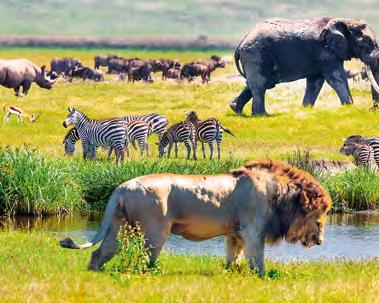
• What living things live there? Include animals and other living things.




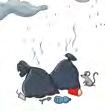

• Is this ecosystem in danger?


• How can we protect it?
HoW
Before, I thought… Now, I think… Reasons
What did I think about ecosystems before? What do I think now? Why

big pentagon means you are learning a lot!
2 Which things did you find surprising or interesting? Explain. How do these things improve people’s lives?
PORTFOLIO


Think and write all the rules you think are necessary in your PE class. First, using the logic wheel technique, find out why are they important and how we can follow them.


1 Do we all have to like rules?
2 What can we do if a classmate disagrees with the rules?

3 With the class, prepare a poster with the rules of the classroom that you think are more important.

What does coexistence mean?

U4
How can we get on well with each other?
Let’s reflect
4 Logic wheel Why is it important to get on well with people?
2 3
What is the difference between a group where everyone gets on well and one in which they don’t?
15 Ask a classmate to give you points from 1 to 10 for the following aspects. Then, answer the questions in your notebook.
a) Do you agree with their assessment?
b) What was your highest mark for? Why?
c) Make a commitment to do better in one of the four aspects. Write it in your notebook.

16 How was your progress in this unit? Draw the answer in your notebook.
participate in class. I pay attention in class. like PE. I want to learn. I progressed steadily, in a straight line. had to make more effort in some things, but I succeeded. I had some difficult moments and found it hard to keep up.
47

nt E rdis C iplinary
Global Thinkers includes activities that connect different knowledge to different areas.
This content interaction is adjusted to pupils’ reality, as it is presented as a whole instead of in a compartmentalised way.
This interdisciplinary approach increases the effectiveness of learning because it requires knowing the why and the purpose for what has been learned; guaranteeing that learning is more significant, functional and competence driven, reflecting pupils’ reality.
INTERDISCIPLINARY LEARNING
The learning experiences, which are structured within the Sustainable Development Goals (SDGs), offer pupils content from the different core areas. They are interrelated with each other, for their practical application.
Selected content is connected to each other and is based on real and authentic learning experiences, giving them a functional and significant meaning to pupils.

WHere can thEy Be fouNd?
In each areas’ learning experiences, unit by unit, based on one of the Sustainable Development Goals (SDG). They provide significant, functional
6 ¡Cuidemos del planeta!
El ser humano debe mejorar su relación con la naturaleza, ya que es muy importante para la supervivencia del planeta Tierra. Por ejemplo, en los bosques viven una gran cantidad de animales, plantas e insectos que, además, desempeñan un importante papel en la lucha contra el cambio climático…


¡Son nuestro refugio! Debemos hacer un gran esfuerzo para proteger el medioam-
and competence-based logic allowing pupils to give practical and transformative answers.

3 Carry dancingon

¿Qué acciones puedes llevar a cabo para cuidar el medioambiente?
Presenta tus ideas en varias viñetas y organizad una exposición de cómics en el colegio.
¡Sigue el hilo!
Lectura Los mitos
¿Sabías que Pegaso era un caballo mágico que, cuando volaba, parecía que corría por el aire?
¡Descubre el mito sobre el origen de las estaciones!
Vocabu ario
Utiliza palabras nuevas sobre las estaciones.
What do you think?
Customs and traditions are part of what we call “culture”. Do you know any different culture?
Las eyendas
¿Conoces alguna leyenda sobre el lugar en el que vives?
Plan of action
The facts
There is very different people living in the world. They all have different tastes and cultures. Learn
Spanish culture is a mixture of the different people who have lived in the country through the centuries.
Con los cómics puedes narrar interesantes historias sobre mitos y leyendas.
INTERDISCIPLINARY PROJECTS
They are integrative learning experiences that allow pupils’ competence development and the application of acquired learning. Starting from a learning experience, that is linked to the SDGs, pupils will carry out a research process in which they will consult different sources of information, organise their work and produce a final product whose dissemination will have a clear objective of action and transformation. In short, it includes processes of: planning, execution, communication and assessment.
WHere can thEy Be fouNd?
In the Pupil’s Book, at the end of each term, a project will be suggested from each of the core areas. They are connected to each other by a shared SDG. Pupils will go through different phases (Think, Design, Make, Present and Test) to give a practical and transformative
DESCUBRE EL PROYECTO INTERDISCIPLINAR
Protegemos la vida submarina
CON OJOS DE PEZ
¿Sabías que en 2050 los océanos tendrán más plásticos que peces?
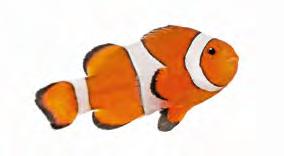
¡Tenemos que detener esta situación y evitar que los mares y la vida que estos albergan enfermen! ¡Actuemos ya!
DISCOVER THE INTERDISCIPLINARY PROJECT
response that allows us to find solutions and make contributions to the situation raised. Each project has a clear purpose based on research, entrepreneurship and connecting learning from the different core areas.
3 NSTRUYE NSTRUYE
I STORE WELL, EAT WELL THINK DESIGN MAKE
Organising food in the fridge helps preserve it. Get organising!
Does it happen to you that you sometimes forget about food in the fridge, and then you can’t eat it because it’s gone off?
How can you organise your fridge?
In groups, discuss your ideas.
Look up information about food that you need to store in the fridge or freezer and food that you can keep in a cupboard.





Look at the different temperature requirements and the type of food. To create your wall display, you can cut out pictures from magazines, drawings, etc.
Help put the shopping away at home!
Create your wall display on how to organise a fridge: You can draw the outline of a fridge. Where do the different types of food go?
Put what you know about organising food into practice. Use products that your family normally buys.
PRESENTA
4 PRESENTA Stage
Preparad una conferencia para presentar los animales y las plantas que habéis incluido en vuestro diorama. Además, explicaréis las causas de que el mar contenga ahora tanto plástico y sus consecuencias.
¡Es importante hacer algo desde hoy!
Antes de la conferencia, ensayad varias veces antes. ¡Seguro que os sale genial!
5 CHECK
What do you know about storing food now?

How can you use this information?
2 1 3 4
Prepare a presentation about an organised fridge.
Explain how to preserve food properly and avoid wasting it.
ENTREPRENEURSHIP
The interdisciplinary end of term projects promote entrepreneurship, as pupils will develop the skills and awareness that are necessary to transform creative ideas into actions, developing the following dimensions:
Personal Social Productive Self-knowledge
Creativity & Creation
Imagination
Teamwork Responsibility
Communication Leadership
Community and common good

WHere can thEy Be fouNd?
Interdisciplinary end of term projects require the development of:
– The personal dimension. The "Think" phase, opens the project and involves creativity and imagination. The "Test" phase is based on self-knowledge.
– The social dimension. The "Design" phase involves assuming responsibility, teamwork.



Initiative
Innovation
Risk Assumption
Productivity
– The productive dimension. The “Build”, “Present” and “Test” phases allow pupils to produce a final product for its later dissemination. Finally, they assess the work carried out to become aware of their individual and group strengths and possibilities for improvement.
ACTIVE METHODOLOGIES
Global Thinkers develops skills related to:
• Cooperative learning

• Developing thinking
• Emotional education
• Digital world
• Learning through play

• Self-assessment
These skills will be learned and applied from all areas, in a linear and progressive manner and in an interdisciplinary way.
you dance, you express
i nt E rdis C iplinary Icons Cooperative learning Emotional education



30
Dancing means moving your body to the beat. Dancing helps you get to know your body. It also improves your coordination. You can use dance to communicate with others and keep fit.
1 Look at the pictures. Create some steps for each type of dance.



and a
ACCOMPANY
Hand signs
b c
1 Observe and learn the hand signs for the following notes.
More at anayaeducacion.es
Gamification ICT
your Musical hoops
SDGs Developing thinking
ZONE ¡¡
What do I know?
12 Find the words in the word search. Use them to complete the sentences in your notebook.
SPACEITPA
LTBISTMZA HXEMGZEAD GDAIQMPUN YBTKDANCE IROIASPNS
a) I have to follow the … to … properly.
b) When I dance, I express feelings like … and … .

c) The … and … I use are different in each routine.
13 Draw someone in static balance and someone in dynamic balance in your notebook.

I know how to do it.
I need help.
Audio Assessment 24
We must place special emphasis on guaranteeing educational inclusion, personalised attention to pupils and their learning needs, participation and coexistence, the prevention of learning difficulties and the implementation of reinforcement mechanisms, expansion and relaxation, methodological alternatives or other appropriate measures as soon as any of these situations are detected.
Global Thinkers is committed to the principle of inclusive education and to creating better learning conditions for all pupils. To this end, it favours the implementation of resources aimed at achieving personalised teaching, with a flexible structure and reinforcement and expansion mechanisms.
UDL GUIDELINES
LOMLOE establishes the need to provide pupils with multiple means of representation, action and expression and forms of involvement in the information that is presented to them. That is, the application of the principles of Universal Design for Learning.
This is why Global Thinkers has been conceived to respond to these three principles:
– Multiple forms of representation in access to information. That is, diversifying entry channels. Not everybody perceives and understands information in the same way.
– Multiple forms of action and expression; that is, diversifying output channels, offering options for interaction, communication, activities with different levels, etc.
– Multiple forms of involvement; that is, taking into account the affective and emotional elements of learning.
WHere can thEy Be fouNd?
Global Thinkers has been conceived taking into account the principles and guidelines of the Universal Design for Learning (UDL).
In the Teachers' Guide there is information about which elements of Global Thinkers respond to each principle of the Universal Design for Learning (UDL).
The different elements of the Operation World Project are designed taking the principles of Universal Design for Learning (UDL) into account. The following table shows the relationship between the UDL principles or guidelines and the elements of the project:
GLOBAL THINKERS
Learning experience
SDG
Image and context
What do you think?
Context
Target in action
UDL guidelines applied in the project
PRINTED MATERIAL
• The direct relationship with the SDGs (challenges of the 21st century) and with the daily life of pupils optimises relevance, value and authenticity (7.2).
• An alternative representation of the text facilitates the understanding and the personal connection with the context of the Learning Experience (2.5).
DIGITAL ENVIRONMENT

• Give teachers and pupils access to updated information about the SDGs using various means of communication (5.1).
• The questions link the Learning Experience with the pupils' experiences and knowledge (3.1). What do I know? It suggests traceable interactive activities to detect previous ideas at the start of the unit (3.1).
• It provides objective and verifiable information about the importance of the target in action (8.1).
• It stimulates collective reflection using a useful thinking strategy which can be used to deal with everyday problems (9.2).
• It encourages independence by proposing a final product which is open to contextualization in the center and allows the pupils to choose (7.1), varying the levels of difficulty (8.2).
• Facilitates generalisation and transfer of essential learning (3.4).
• It promotes community and collaboration for the collective creation and presentation of the final product (8.3).
• It uses audiovisual materials that present learning experiences, stimulating expectations and beliefs that increase motivation (9.1) at the start of the unit.
• In each unit, further information from selected sources is presented in different formats to provide alternatives to auditory (1.2) and visual (1.3) information to represent the text (2.5): songs, subtitled audio or video, locutions of textual information, graphical organisers, visual thinking, etc. also usable to stimulate participation.
Teachers will be oriented on the essential learning of each area, so that pupils acquire the output profiles for the curricular development of each area.
WHere can thEy Be fouNd?
2
1
¿Dónde viven los seres vivos?


Formamos parte de la naturaleza En la naturaleza podemos distinguir dos componentes:
• Los componentes no vivos o inertes.
• Los seres vivos.
Estos componentes, además, están relacionados entre sí.
Un ecosistema es el conjunto formado por los componentes no vivos del medio, los seres vivos y las relaciones que se establecen entre todos estos elementos.
3
Ejemplo de cadena alimentaria
La planta sirve de alimento al saltamontes
El saltamontes sirve de alimento al lagarto.

son los andaluces?ecosistemas
Los ecosistemas pueden ser terrestres o acuáticos. También se pueden clasificar en ecosistemas naturales, que no están alterados por el ser humano, y ecosistemas humanizados, mo- dificados por los seres humanos.

Algunos ecosistemas andaluces
Las relaciones en el ecosistema Los seres vivos de un ecosistema establecen entre ellos dife rentes tipos de relaciones. Las más importantes son las ciones alimentarias. Las cadenas alimentarias estas relaciones indicando, con flechas, quién se come a quién.
1 En parejas, observad la imagen del ecosistema de esta página e id diciendo nombres de los seres vivos y de los componentes no vivos que lo forman. Por ejemplo:
2
Los componentes no vivos de los ecosistemas
Algunos componentes no vivos de un ecosistema son el aire, el sol, el clima, el agua y las rocas. Vamos a centrarnos en las rocas, ya que son el soporte sobre el viven los seres vivos.
Las rocas forman parte del ecosistema



Las rocas son los materiales que forman el terreno sobre el que vivimos.

En la naturaleza hay muchos tipos de rocas que se diferencian por su aspecto, por su color y por como aparecen en la naturaleza
Las rocas y el relieve Según el tipo de rocas que encontremos en los ecosistemas podemos tener diferentes formas del terreno.

El relieve es el conjunto de las diferentes formas del terreno.
Fíjate en las imágenes del granito y la caliza. ¿En qué crees que se diferencian?
El lagarto sirve de alimento al águila
Las personas formamos parte de los ecosistemas
Granito Caliza
Observa las imágenes y escribe una redacción describiendo cómo es el relieve. ¿Qué tipo de rocas lo forman?
Bosque mediterráneo



El ñú es un ser vivo, el agua es un componentes no vivo, etc. A continuación forma una cadena alimentaria con tres animales que aparezcan en la imagen.
Plantas: encinas, alcornoques, jaras, romero...
Animales: insectos, lirones, conejos, ciervos, ja- balíes, aves, linces...


Playa Plantas: salicornia, siempreviva, arenaria... Animales: aves acuáticas, peces, medusas, can- grejos, estrellas y erizos de mar, pulpos....
Marismas
Plantas: carrizos y juntos.
Animales: aves acuáticas (patos, garzas, etc.), peces e invertebrados.
Dehesa Plantas: encinas separadas y pasto.
Animales: rapaces, reptiles anfibios y otros pro- pios de la actividad ganadera como los cerdos.
1 Clasifica los ecosistemas andaluces de las fotografías: ¿Cuáles son terrestres y cuáles acuáticos? ¿Cuáles son naturales y cuáles humanizados?
2 Dibuja un ecosistema de tu comunidad que hayas visitado. Escribe un pequeño texto describiendo los animales o plantas que viste.
Llamamos recursos naturales a todo lo que aprovechamos de la naturaleza para cubrir nuestras necesidades. Son, prin- cipalmente: alimentos, agua, espacios (terreno), materias primas y bienestar.
¿Qué daños estamos provocando?
B C




Al utilizar los recursos naturales, alteramos los ecosistemas
• Agotamos los recursos, los sobreexplotamos
• Contaminamos de los ecosistemas con humos, plásticos, ruidos, luz, etc.
• Ocupamos mucho espacio y reducimos el que necesitan los seres vivos.
Esos daños originan graves consecuencias en los ecosistemas porque provocan la desaparición de seres vivos y el calenta- miento global del planeta.
Cuidamos los ecosistemas Para conservar los ecosistemas debemos hacer un sostenible de los recursos. Todas las personas podemos ayudar a alcanzar este objetivo llevando un estilo de vida sostenible.
Consejos para llevar un estilo de vida sostenible
Recicla...
... separa el plástico, el vidrio, el papel, el cartón, etc. para que se puedan reciclar.
Ahorra agua...

... dúchate en lugar de bañarte, cierra los grifos cuando no los utilices.
1 Escribe la definición de estos términos: extinción, sobreexplotación, vida sos- tenible.
2 Elige uno de los ejemplos de la imagen y explica cómo puedes aplicar un estilo de vida sostenible: bolsas de plástico, hojas de papel, ropa.
Reutiliza...
... los objetos, sobre todo los de plástico, para darles otra función.
Ahorra energía...
... apagando las luces y los aparatos que no estés usando.
Respeta la naturaleza...
... cuando salgas al campo; respeta los animales y las plantas, recoge los desperdicios y nunca enciendas fuego.
DIVERSITY
It is necessary to take into account pupil’s needs, characteristics and different learning rates. Resources for attention to diversity suggest activities in which pupils can put a wide repertoire of cognitive processes into practice, such as; identify, analyse, recognise, associate, reflect, reason, deduce, induce, decide, explain, create, etc., avoiding focusing on just some of them allows a better adjustment to different learning styles.
WHere can thEy Be fouNd?


There are resources for attention to diversity in the digital environment.
LET’S LEARN ABOUT LIVING BEINGS!
Name and surnames:
LET’S LEARN ABOUT LIVING BEINGS!
Name and surnames: 1 WORKSHEET
WORKSHEET
THE CHARACTERISTICS OF LIVING BEINGS
1 Classify the following things as non-living things or living beings: wasp, shoe, pen, tree, clover, sand, clock, moss, pencil. Add three examples of your own to each group.
Non-living things:
1 Classify the following things as non-living things or living beings: wasp, shoe, pen, tree, clover, sand, clock, moss, pencil. Add three examples of your own to each group.

Non-living things:

Living beings:
Living beings:
THE TYPES OF LIVING BEINGS
2 Circle the plants in one colour. Circle the animals in another colour. Cross the pictures that do not show an animal or a plant.
THE TYPES OF LIVING BEINGS
2 Circle the plants in one colour. Circle the animals in another colour. Cross the pictures that do not show an animal or a plant.




Pupil: R Worksheet 1
1 Sing and mark the beat with body percussion. Draw the beats and memorize the chants.
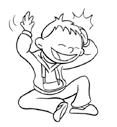



• • • • three potatoes, four:
• • • Five potatoes, six potatoes, seven potatoes, more!
Eeny, meeny, miny, moe
• • • • catch a tiger by the toe.
• • • •
If he hollers, let him go,
S.A. Authorised
how I wonder what you are.
1

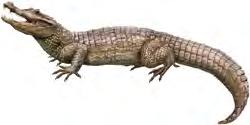



1 © Grupo Anaya S.A. Authorised
Mitty Matty had a hen,
• • • • she laid eggs for gentlemen.
• • • • Sometimes nine and sometimes ten,
• • • •
Mitty Matty’s fine fat hen!
printable
Active methodologies are a set of methods, techniques and strategies that put pupils, of any educational level, at the centre of learning.
They foster teamwork and encourage a critical spirit, leaving aside content memorising processes. It is a way of working that prepares pupils for real life situations and for their professional life.
COOPERATIVE LEARNING

Cooperative learning is the didactic use of small groups in which pupils work together to maximise their own learning and that of others. The different cooperative learning structures and techniques are presented in a sequenced and progressive way, through each unit’s activities. Teachers can change and adapt it to the characteristics of their pupils or the approach they want to give to the activity or task.
6 Observa el ejemplo y resuelve.
WHere can thEy Be fouNd?
a) 3 × 50 d) 5 × 600 g) 2 × 4 000
b) 7 × 30 e) 8 × 200 h) 3 × 2 000
There is at least one activity in each unit, of each area, that pupils have the chance to resolve by interacting with their group, using the cooperative learning technique. Progress will be made throughout the entire stage with more complex cooperative techniques.


c) 10 × 20 f) 10 × 300 i) 2 × 3 000

7 Completa la serie en tu cuaderno.
× 20 × 10 × 20
2 ? ? ?
¿Por qué número tienes que multiplicar el primer número de la serie para conseguir el último?
8 Folio giratorio Lee y contesta.
a) Escribe dos multiplicaciones diferentes cuyo producto sea 1 200.
b) En grupos, comparad vuestras respuestas. Después, compartidlas con toda la clase. ¿De cuántas formas distintas habéis obtenido este resultado?
9 ¿Quién tiene más dinero? Y yo 50 monedas de 20 cts. He ahorrado 20 monedas de 50 cts.


Spinning, rolling and
their main axes
Spinning or rolling means rotating your body or turning it in different directions. You can do it on the ground or in the air. The main axes on which you spin or roll are:
To spin properly, you need to control your posture and your balance.
• Longitudinal, when you spin or roll to the right or left when standing up or lying down.









• Transversal, when you roll forwards or backwards.
7 What axes are the children spinning or rolling around? What direction are they going? Write the answers in your notebook.
8 Look at the three pictures. Which children are spinning or rolling in the air? Write your answers in your notebook. Explain your answer.

DEVELOPING THINKING
Strategies for developing thinking are those that help pupils learn to think and improve their mastery of knowledge, its application and transference, in a critical way, through some of the suggested activities.
WHere can thEy Be fouNd?


There is at least one activity in each unit, of each area, that pupils can resolve using a technique or a thinking key. Progress will be made throughout the entire stage with more complex thinking techniques and keys.

Literal, connected and evaluative cognitive processes are combined in the different types of activities in each section. Thinking techniques also encourage reflection to provide a solution to the learning experience in the “Take action”.
What have I learned?

EMOTIONAL EDUCATION
Learning a series of skills that help pupils, on an intrapersonal level, identify and recognise emotions, regulate and manage them and, on an interpersonal level, acquire relationship skills with people and have experiences of personal satisfaction.

Intrapersonal Dimension Interpersonal Dimension

Awareness and emotional regulation

Self-awareness and self-esteem
Social competence

Skills for life and well-being
WHere can thEy Be fouNd?
Exciting activities: Found implicitly, in the learning experiences proposed at the beginning of each unit.
Emotional activities: Found explicitly. They are included in the section “What have I learned?”. The purpose of this location is to make pupils aware that their emotional state influences their way of learning. To do this, they must identify
their emotions when carrying out activities, and identify in which situations the emotions are positive and in which they are negative. Throughout the course, pupils will move from the intrapersonal to the interpersonal dimension. In the same way, progress will be made in emotional competence throughout the entire stage.
DIGITAL
It integrates the use of ICT as a resource to obtain information, selecting it and using it in accordance with the activity’s purpose. This key also allows pupils to develop skills related to planning, managing and preparing work, network communication and collaboration, and digital citizenship skills. ICTs also favour, from digital resources of various types, the development of Flipped classroom dynamics.
WHere can thEy Be fouNd?
The Global Thinkers project includes a digital project whose objective is to provide resources that promote learning through ICT. In the units, some of the activities are marked with an icon that indicates that digital resources and the use of ICT are required. In the digital book and on the pupil website, many more digital resources can be found.

They aim to offer a more exhaustive use of these technologies for learning, such as the ICT Plan. In the areas of Mathematics and Natural Science, activities are specially designed to exercise computational thinking at various levels of difficulty, both in its concept (unplugged computational thinking) and in its application, such as "Learning to use Scratch”.
images on the web can be used. Most of them belong to someone or have an author to whom we must ask permission for its use or publication.
Pupil:

Scratch is a programming language and an online community with which you can create and share audiovisual content such as video games, cartoons, animations, etc. The online version of Scratch is available at the following address: https://scratch.mit. edu/ The Scratch programming environment is based on images: the orders of the program are blocks that look like puzzle pieces, which have to be fitted together to form the programming sequence and the program, which would be the equivalent of the complete puzzle. Consult the ICT plan at anayaeducacion.es and remember the different devices you can use to manage Scratch.
WORKSHEET 1
STOP Mascot
– Scratch is a block-based programming language.
– Scratch is an online community.








– Scratch is a software element.

and logo.
work
– Scratch is an online tool that allows you to create video games, cartoons, etc.



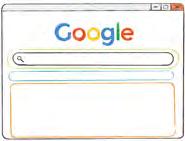
– Scratch is specially designed for boys and girls from 5 years of age to 7 years of age.
LEARNING THROUGH PLAY


These are non-traditional and unusual activities that help pupils acquire learning in a playful and fun way, sometimes through gamification dynamics. Some activities can be carried out without the intervention of ICTs and others require these technologies.



WHere can thEy Be fouNd?

Some activities in the units are marked with a play-based learning icon. Likewise, in the review section, there are activities in which pupils will apply their learning through play. There




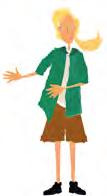


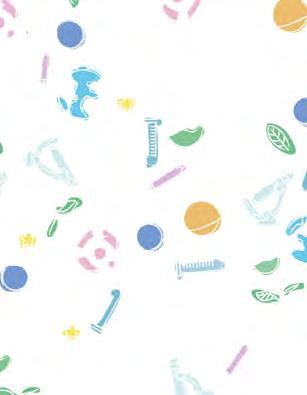
are also digital resources, such as the didactic adventure “Ultimate travellers”, escape games, interactive activities that require a combination of knowledge and skill...



de los


de historia en un contexto lúdico, identificando los hitos más relevantes de cada edad histórica. Su planteamiento grupal favorece la incorporación de estrategias cooperativas, el respeto a las normas y la regulación de las emociones.
pertenecen? edades historia reyes leyes, tumbas, pirámides. Egipto histórica desarrolló

DINÁMICA DEL JUEGO
1. Preparar el panel y las tarjetas para jugar en la pared; solo requiere disponer las tiras adhesivas como se explica más adelante.

2. Formar equipos de cuatro o cinco personas.
3. Por sorteo, o con la ayuda de un dado, establecer qué equipo inicia el juego. El orden de participación de los demás equipos seguirá el sentido de las agujas del reloj o la puntuación del dado.
4. La persona del equipo que inicia el juego cogerá una tarjeta y leerá en voz alta el texto que aparece en el reverso. Dispondrán de tres minutos para resolver la cuestión planteada, identificando a qué edad de la historia corresponde. 5. Si la respuesta es correcta, colocarán la tarjeta en el lugar correspondiente del panel y cogerán una segunda tarjeta, repitiendo el mismo proceso.
6. Cada equipo solo responderá a dos tarjetas seguidas, aunque sus respuestas hayan sido correctas. Si el equipo falla en su respuesta, la tarjeta pasa a manos del siguiente equipo para resolverla. 7. Gana el equipo que más tarjetas haya acertado, aunque todos ganarán con el resultado: un panel resumen de los grandes hitos de las edades de la historia.
PREPARACIÓN DEL MURAL Y LAS TARJETAS
Para jugar en una superficie vertical como la pared, el tablero y las tarjetas necesitan una mínima preparación. El alumnado podrá participar en ella. Preparación del mural Localizar en el mural, debajo de cada periodo, los espacios marcados. Hay que pegar en ellos las tiras adhesivas.
2. Las tiras son de doble cara, en el tablero usaremos la más dura. Reservar la otra cara para las tarjetas.
3. Retirar el protector y pegarlo en los espacios marcados en el mural. Repetir en todas las marcas.
Preparación de las tarjetas
1. Usar las caras sobrantes de las tiras adhesivas para preparar las tarjetas.
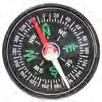

2. Retirar el protector y pegarlo en las tarjetas en el sitio señalado.
Parte dura Aparición losprimerossereshumanos
Parte blanda




ASSESSMENT
It must respond to the pupil body’s competence profiles for this stage, as specified in the established assessment criterion. It is carried out through activities in which pupils demonstrate if they have acquired the basic knowledge and have become aware of their strengths and weaknesses.

WHere can thEy Be fouNd ¿
In addition to the use of rubrics and other instruments for selfassessment and peer-assessment processes, a portfolio is also included in the textbook so that pupils are aware of the “what have I learned” and “how have I learned it” section in each unit, identifying their strengths to consolidate them, and their weaknesses so that they become new challenges in the following units.
1 I loved it.
2 I didn’t like it.
3 I was surprised.
4 I didn’t learn much.
5 I learnt a lot.
6 I wouldn’t like to do it again.
7 I would like to do it again.
8 I will do some more research at home.
Resources Digital resources
Unit photo album Interactive activities
Game room
Inclusion and attention to diversity
The essentials
Reinforcement worksheets 1 and 2 Extension worksheet Assessment Test evaluator
Evaluation and competence-based evaluation Classroom materials
Microscope
STEAM Stars: materials to learn about Maria Sibyla Merian
PORTFOLIO
WHAT HAVE LEArnED?
1 What is in the school ecosystem? Choose one answer.
a) The building, the playground, and the school’s furniture and objects.
b) The building, the playground, the school’s furniture and objects, and the people.
c) The building, the playground, the school’s furniture and objects, the people, animals and plants, the sun, the air, and the interactions between all these things.
2 Look at the pictures and describe two feeding relationships.
5 Describe three human activities that use these natural resources.
a) Water b) Rocks
c) Trees d) Land
6 Look at the picture and answer the questions.
a) Which things do not belong in this environment?
b) How do these things harm living things?
c) How can we remove pollution from this environment?
7 Match each type of damage to its causes. Suggest actions to prevent each type.
a) Air pollution.
b) Extinction of living things.
c) A lot of waste.
1. We occupy space and destroy habitats.
3 Guess the rock in the picture. What type of relief can this rock form?

4 Imagine all the plants on Earth disappear. How does this affect the ecosystems? Answer the questions. Explain your answers.
a) What happens immediately?
b) What happens months later?
c) What happens years later?
Answer key
What have I learned?
1 1 c)
2 Feeding relationship 1: flower – snail – lizard – fox

3 The rock in the picture is a limestone rock, and can form relief with large waterfalls and vertical walls.
4 a) Herbivores and omnivores haven’t got a food source.
b) Herbivores would have starved to death. Imbalan-
2. We use many resources and don’t recycle.
3. Cars cause toxic emissions. Don’t forget to complete your photo album at anayaeducacion.es
Research a real ecosystem and make a wall display about how to protect it.
• Which countries have this ecosystem?
• What living things live there? Include animals and other living things.
• Is this ecosystem in danger?
• How can we protect it?
2 Copy and complete the ‘Before, I thought…’, ‘Now, I think…’, organiser in your notebook.
Before, I thought… Now, I think… Reasons
What did think about ecosystems before? What do I think now? Why did my opinion change?
HoW HAVE I LEArnED?
1 Copy the diagram. Evaluate yourself for each category. Connect the dots to make a pentagon. A big pentagon means you are learning a lot!
Keys + info
ICT
Make a digital anayaeducacion.es Thought
Applying the I thought now Emotional Section devoted encourage pupils in relation to
CONNEcTI ExPERIEN
Using the about ecosystems, will analyse prepare a its features, proposals
5 Suggested answer:
a) Water: drinking, generating electricity, irrigating crops.
b) Trees: getting wood for construction, producing cellulose pulp for paper production, producing fruit.


c) Rocks: building materials, mineral extraction, energy source (coal is a rock).
d) Soil: building cities, farming to grow food, getting minerals and rocks.
6 a) Rubbish, plastics and other waste such as furniture debris.

b) Water pollution, soil pollution, pollution of the

2 Which things did you find surprising or interesting? Explain. How do these things improve people’s lives?
7 a) -3/ b)-1/ c)-2. Suggested actions: open answer.
Suggestions:
1. Increase the size of protected areas for fauna, flora or landscapes.


2. Reduce consumption, reuse and recycle.
3. Use public transport or electric means of transport, use bicycles or walk when distance permits.

Target in action: Research a real ecosystem and make a wall display about how to protect it
Next, using now I think’ the children own perceptions, discoveries fill in a graphic conclusions.
Traffic lights. Apply this colour code to each activity in your notebook. I knew the answer. I needed help. I couldn’t answer the question. display is that the pupils use that they understand and data without understanding displays are expected to be other, but they should all assigned ecosystem and several that can contribute to protecting to be complicated proposals not cut down trees, do not do not take sand from
been prepared, each team













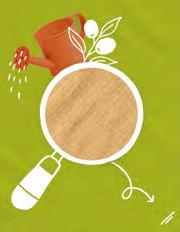




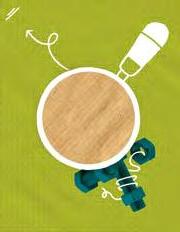



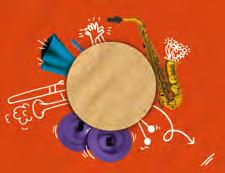













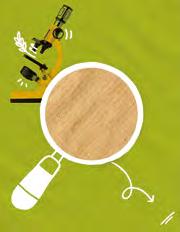

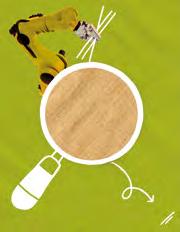
































MaTerialS for thiS lEvEl

PUP il'S m A te R ialS
BOOKS
One book per course with a competency approach to learning by applying what has been studied.
tea C he R' S m A te R ialS
TEACHER’S GUIDES
They reproduce the pages of the student's book to enrich it with complementary activities, teaching suggestions, a list of digital resources, solutions, etc.


TEACHER’S GUIDE

C LASSROOM m A te R ialS
A careful selection of materials, per course, designed to promote learning through practical activities, games and STEAM.
Digital
Rivers in Spain


Compasses


Physical

OBJETIVO DEL JUEGO
El objetivo del juego es reforzar el aprendizaje de los contenidos de historia en un contexto lúdico, identificando los hitos más relevantes de cada edad histórica. Su planteamiento grupal favorece la incorporación de estrategias cooperativas, el respeto a las normas y la regulación de las emociones. de millones aparecieron conopertenecen? edades reyes bernaban, hacían etc. máxima autoriEgipto enterrados tumbas,llamadas desarrolló histórica desarrolló civilizaciónegipcia?

DINÁMICA DEL JUEGO
1. Preparar el panel y las tarjetas para jugar en la pared; solo requiere disponer las tiras adhesivas como se explica más adelante.
2. Formar equipos de cuatro o cinco personas.
d igital prO jeC t

3. Por sorteo, o con la ayuda de un dado, establecer qué equipo inicia el juego. El orden de participación de los demás equipos seguirá el sentido de las agujas del reloj o la puntuación del dado.
4. La persona del equipo que inicia el juego cogerá una tarjeta y leerá en voz alta el texto que aparece en el reverso. Dispondrán de tres minutos para resolver la cuestión planteada, identificando a qué edad de la historia corresponde. 5. Si la respuesta es correcta, colocarán la tarjeta en el lugar correspondiente del panel y cogerán una segunda tarjeta, repitiendo el mismo proceso.
In addition to the resources and tools described in the pages of the digital project, specific proposals for the area are included, for example, science workshops, scratch proposals, numerous diagrams, etc.



6. Cada equipo solo responderá a dos tarjetas seguidas, aunque sus respuestas hayan sido correctas. Si el equipo falla en su respuesta, la tarjeta pasa a manos del siguiente equipo para resolverla.
7. Gana el equipo que más tarjetas haya acertado, aunque todos ganarán con el resultado: un panel resumen de los grandes hitos de las edades de la historia.
Videos of scientists






Game about the periods of history
The

PREPARACIÓN DEL MURAL Y LAS TARJETAS
Para jugar en una superficie vertical como la pared, el tablero y las tarjetas necesitan una mínima preparación. El alumnado podrá participar en ella. Preparación del mural 1. Localizar en el mural, debajo de cada periodo, los espacios marcados. Hay que pegar en ellos las tiras adhesivas.
2. Las tiras son de doble cara, en el tablero usaremos la más dura. Reservar la otra cara para las tarjetas.
3. Retirar el protector y pegarlo en los espacios marcados en el mural. Repetir en todas las marcas. Preparación de las tarjetas
1. Usar las caras sobrantes de las tiras adhesivas para preparar las tarjetas.
2. Retirar el protector y pegarlo en las tarjetas en el sitio señalado.
Parte blanda

Global Thinkers books are organised into twelve units. Each one of them offers a learning experience through which basic knowledge and different skills will be worked on to achieve the “Target in action” at the end of each unit.



LOOKING AFTER NATURE!












Experiences










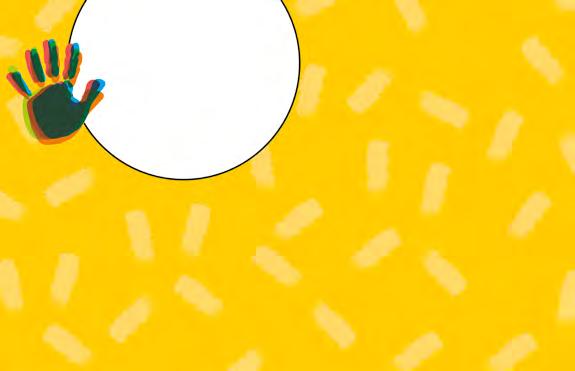



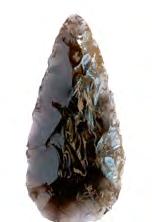

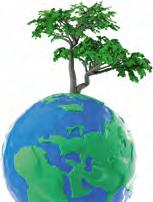


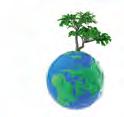



Learning














WHAT ArE THE non-LIVInG THInGS In An ECoSYSTEM LIKE?
What non-living things can you find in nature? THINK
1 Look, listen and read.
Some of the non-living things in an ecosystem are the air, the sun, climate and rocks. Rocks form the ground we live on. Rocks have got different shapes, colours and sizes. They appear in different ways in nature.
ro CKS A n D MI nEr ALS
Rocks contain minerals. There are many different types of minerals. They can have different shapes, brightness, hardness and colours.
1 Look and match the properties to the correct mineral.
a) It is very hard.
b) It has got geometric shapes.
c) It is shiny.
d) It is soft.
e) It is yellow.
2 We can make objects using rocks and minerals. Look at the pictures and complete the sentences with the correct words.
a) We can use for •••
b) We can use ••• for •••
c) We can use for •••
d) We can use for •••
Minerals
Uses
2 Read the definitions and match them to the correct rock.
a) It is usually grey or black. It has got layers.
b) It is very hard. It has got three different components.
c) It can contain fossils.
d) It is a volcanic rock and it is very hard.





3
3 Rocks 48
What are the differences between marble and obsidian?
Look at the pictures and describe them.
What is marble like?
Marble is white/black. It is hard/medium-hard/soft.

Choose a mineral or a rock. Then, ask questions and guess. 4
Is it smooth/rough?
Is it hard/soft?
It’s green/yellow/black.
It shines. / It doesn’t shine.
NOW I KNOW…
We can find different types of rocks and minerals in nature.
CHECK WHAT YoU LEArnED
WHAT ArE THE MAIn ECoSYSTEMS In AnDALUCÍA?

THINK
How many different ecosystems can you identify near you?
1 Look, listen and read. Ecosystems can be terrestrial or aquatic. In natural ecosystems, there is no human intervention. In artificial ecosystems, humans change the environment.
Types of ecosystems in Andalucía
Beach
Mediterranean forest
Plants: holm oaks, cork oaks, rockrose and rosemary. Animals: insects, dormice, rabbits, deer, wild boars, birds and lynx.
Marsh
5 Types of ecosystems in Andalucía 52
Plants: rushes and reeds. Animals: aquatic birds (ducks and cranes), fish and invertebrates.
Plants: glasswort, houseleek and sandwort.
Animals: aquatic birds, fish, jellyfish, crabs, starfish, sea urchins and octopuses.


Dehesa
Plants: holm oaks and pasture. Animals: birds of prey, reptiles, amphibians, and farm animals, such as pigs.






Choose a forest, a marsh, a beach or a dehesa near you and draw it. Name the animals and plants you can see. Draw a food chain. Then, describe it to a classmate.
The animals/plants in this ecosystem are rabbits/ crabs/rushes/pastures...

Your turn!
TYPES o F ECoSYSTEMS
We classify ecosystems by the type of environment. Ecosystems can be terrestrial or aquatic.
1 Look at the pictures and answer the questions.
A terrestrial ecosystem: a forest. An aquatic ecosystem: a pond.
a) Draw a food chain for each ecosystem. Include at least one plant and two animals.
b) Why are those ecosystems terrestrial and aquatic? Explain your answer and describe them to a classmate.
c) Look at the pictures below. Do the animals live in terrestrial or aquatic ecosystems?
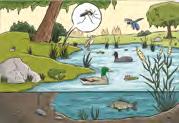
turkey wild boar jellyfish

spider squid

squirrel

lynx
lobster seal

See ‘Terrestrial and aquatic ecosystems’ at anayaeducacion.es


The animals in aquatic ecosystems live in water.
There are many different ecosystems, like rivers, ponds and forests.
Basic knowledge. The learning experience requires pupils to apply the skills and basic knowledge acquired throughout the unit.
Competence-based activities. These familiar activities help pupils transfer learning and its application to various and interesting contexts.
My
8 Protecting ecosystems
HoW CAn WE TAKE CArE oF ECoSYSTEMS?
THINK
What do you do to protect ecosystems?
1 Look, listen and read. We need to protect resources and ecosystems. We should use natural resources carefully. Everyone can help by living more sustainably.

Tips for living more sustainably
2 Choose the correct action for a sustainable lifestyle.
1. When I want some water in a restaurant, I…
a) ask for tap water in a jug.
2. In the toilet, I…
a) throw tissues in the bin.
3. During my break, I…



3
b) ask for bottled water.
b) flush tissues down the toilet.

a) leave my banana peel on the bench. b) throw my banana peel in the bin.
In pairs, make suggestions to take care of the environment.
Do you want to go to school by car?
Then let’s go by bike!
No, I don’t. It isn’t good for the environment. Yes, that
58
MY VISUAL SUMMARY
An ecosystem consists of: non-living things, living things and the relationships between all these elements.
things: the air, the sun, climate, water and rocks.
Relationships: the main relationships are feeding relationships.
There are different types of rocks: granite, basalt, slate and limestone.



The rocks in an ecosystem determine the landforms.
thinking
THE
SUSTAI n ABILITY Co DE
Do you know this symbol? Gary Anderson designed it in 1971. It’s the international symbol for recycling. The three arrows represent the three steps of recycling: reduce, reuse and recycle.
1 Find objects in your home with this symbol or look for objects on the Internet. Make a list of the objects you find.










2 There are different logos for different sustainable actions. Look at the pictures and match them to their meaning.

A C
B D
NOW I KNOW… Computational
Put rubbish in the right place. Use plasticrecycled bags. Reuse 1 3






3 Work in groups. It’s time to take action!
• Recycle paper, cardboard and packaging.
• Collect toys and give them to charity.
• Turn off taps when you aren’t using them.
• Turn off lights when you aren’t using them.
b) Design a logo for each action. Keep them simple. People need to understand their meaning.
c) Put your logos around your classroom or school to help people be sustainable. For help using ICT sustainably, see worksheet 5 from the ICT Plan at anayaeducacion.es
We can do many things to live sustainably: recycle, reuse objects, save water, save energy and respect nature.
2 4
CHECK WHAT YoU LEArnED
visual summary. In this section of the book, key information is presented graphically, using diagrams and illustrations to help learning each concept.
PORTFOLIO
WHAT HAVE I LEArnED?
1 What is in the school ecosystem? Choose one answer.
a) The building, the playground, and the school’s furniture and objects.
b) The building, the playground, the school’s furniture and objects, and the people.
c) The building, the playground, the school’s furniture and objects, the people, animals and plants, the sun, the air, and the interactions between all these things.
2 Look at the pictures and describe two feeding relationships.
5 Describe three human activities that use these natural resources.

a) Water b) Rocks
c) Trees d) Land
6 Look at the picture and answer the questions.
a) Which things do not belong in this environment?
b) How do these things harm living things?
c) How can we remove pollution from this environment?
Research a real ecosystem and make a wall display about how to protect it.
1 In groups, follow these steps. Step 1. Choose an ecosystem like the ones in the pictures. Step 2. Look for pictures and information about it. Step 3. Use the pictures and information to make a colourful wall display.
7 Match each type of damage to its causes. Suggest actions to prevent each type.
a) Air pollution.
b) Extinction of living things.
c) A lot of waste.
1. We occupy space and destroy habitats.

3 Guess the rock in the picture. What type of relief can this rock form?

4 Imagine all the plants on Earth disappear. How does this affect the ecosystems? Answer the questions. Explain your answers.


a) What happens immediately?
b) What happens months later?
c) What happens years later?
Term Review.
2. We use many resources and don’t recycle.


3. Cars cause toxic emissions.
Don’t forget to complete your photo album at anayaeducacion.es

My Visual Summary and Portfolio
HoW HAVE I LEArnED?
2 Copy and complete the ‘Before, I thought…’, ‘Now, I think…’, organiser in your notebook. 1 Copy the diagram. Evaluate yourself for each category. Connect the dots to make a pentagon. A big pentagon means you are learning a lot!
2 Which things did you find surprising or interesting? Explain. How do these things improve people’s lives?
Term Review
Interdisciplinary Projects De Cerca
b) A computer with the ability to move and perform some tasks autonomously.
c) The space an object occupies.
d) The amount of matter that an object has.
En tu cuaderno relaciona los términos de las dos columnas:
1. Glóbulos blancos

2. Plaquetas
3. Glóbulos rojos

A. Transportan el oxígeno y el dióxido de carbono.
B. Tienen funciones defensivas.
6 Find the names of ten parts of the sensory organs. Then, say which sense each part is connected with.
Rubber Oil Glass Clay Ceramics Paper Tissue Rocks Plastic Sand 9 10 11

8 Assign each material to the correct hat:
NATURAL MATERIALS ARTIFICIAL MATERIALS
What did you eat yesterday?

Very little. A ham sandwich.
Was the ham fresh?

Of course! I always check the quality of my food.
Where did you go yesterday?
I went to buy a new fridge. Mine is broken.
En este texto hay varios errores, localízalos y escribe el texto correctamente en tu cuaderno.
C. Taponan las heridas. Las rocas volcánicas como el granito se forma cuando la lava se enfría y solidifica muy lentamente. Por el contrario, las rocas plutónicas, como el basalto, se forman cuando un magma se enfría muy rápidamente.
My stomach hurts a lot. I also have a fever and am vomiting.
Alex thinks the patient is lying. She diagnoses her with an intestinal infection. What is the patient lying about? How do you know that she is lying? What do you think Alex prescribes to fight the infection?


picture show? 1 2 4 3 39

The STEAM section is also included. Here pupils will discover the great protagonists of science by reading and listening to poems that narrate their lives.
In this last section of the unit, activities invite pupils to reflect on their learning process from different perspectives.
Take action.
tAke 1 2
Imagine that your teacher asks you to go to the market to buy two types of food that are rich in protein, two that are rich in carbohydrates and two that are rich in vitamins and mineral salts. Write in your notebook the name of the place in the image you go to. What food do you buy? What are these places called?
3 In your notebook, put the connected information into groups of three. Beat Heart Remove waste in the form of urine Carry carbon dioxide into the respiratory tracts
Blood circulation Lung Exchange gases with the blood
Filter blood Kidney 4 In your notebook write if the following are bones or muscles: Tibia Femur Masseter Ribs
Biceps Fibula Mandible Trapezius
Abdominals Clavicle Sternum Latissimus dorsi 5 Read about Jorge: What things does Jorge need to change? Why?
When Jorge comes home from school, he eats sweets and watches TV. He almost never takes a shower and if he doesn't like dinner, he doesn't eat it. He goes to bed very late,
at 11, and gets up at 7.30. He is always sleepy in class.
C E C R L C T A H Y F O O O L A M T I L S H P N I K E I I U E S R N E T R G A O I U E
What are the books like?… in detail
Competence-based Activities
Computational Activities
Term Review
Interdisciplinary projects. A project, which is organised in phases, is presented at the end of each term.
DESCUBRE EL PROYECTO INTERDISCIPLINAR
¿Aprovechamos o desperdiciamos alimentos?:
ConsErVAr sABE BIEn
¿Sabíais que la organización de los alimentos en el frigorífico ayuda a conservarlos mejor? ¡Ponedlo en orden!
¿Os animáis a hacer una exposición de un mural de cómo organizar una nevera?
PiENsa
1 hink
un alimento en el frigorífico, se puso en mal estado y no pudistéis comerlo?
En grupo, haced una puesta en común con las ideas que se os han ocurrido.
2
DISCOVER THE INTERDISCIPLINARY PROJECT
PROJECTS THATLEAVE ANIMPRINT
3 C ONSTRUYE Maker
COnSTRUyE
Haced el mural sobre cómo organizar la nevera:
1
Does it happen to you that you sometimes forget about food in the fridge, and then you can’t eat it because it’s gone off?
How can you organise your fridge? In groups, discuss your ideas.
Organising food in the fridge helps preserve it. Get organising!
Create a wall display on how to organise a fridge!
2
I STORE WELL, EAT WELL THINK DESIGN MAKE
Look up information about food that you need to store in the fridge or freezer and food that you can keep in a cupboard. Look at the different temperature requirements and the type of food. To create your wall display, you can cut out pictures from magazines, drawings, etc. Help put the shopping away at home!
PRESENTa
4 PRESENTA Stage
Haced una exposición de una nevera organizada. Explicad lo que hay que tener en cuenta para conservar bien los alimentos y no desperdiciarlos.
5 CHECK
What do you know about storing food now? How can you use this information?






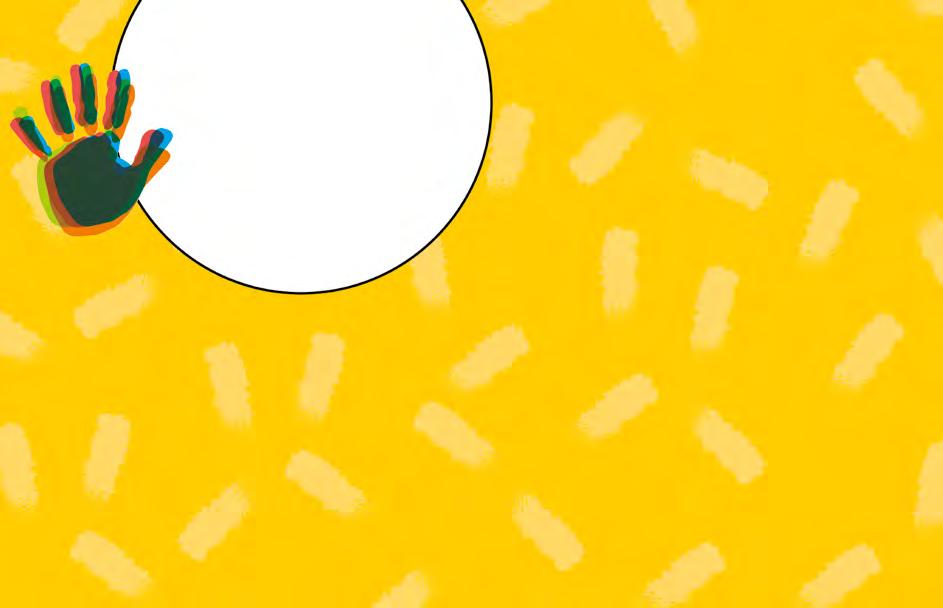
3 4
Create your wall display on how to organise a fridge: You can draw the outline of a fridge. Where do the different types of food go? Put what you know about organising food into practice. Use products that your family normally buys.
PRESENT
Prepare a presentation about an fridge.organised
Explain how to preserve food properly and avoid wasting it.
3
De cerca
The activities on these pages work on the basic unit content, as well as the different language skills.

1
¿Dónde viven los seres vivos?

Formamos parte de la naturaleza
En la naturaleza podemos distinguir dos componentes:
• Los componentes no vivos o inertes.
• Los seres vivos.
Estos componentes, además, están relacionados entre sí. Un ecosistema es el conjunto formado por los componentes no vivos del medio, los seres vivos y las relaciones que se establecen entre todos estos elementos.
2 Los componentes no vivos de los ecosistemas
Algunos componentes no vivos de un ecosistema son el aire, el sol, el clima, el agua y las rocas. Vamos a centrarnos en las rocas, ya que son el soporte sobre el viven los seres vivos.
Las rocas forman parte del ecosistema


Las relaciones en el ecosistema Los seres vivos de un ecosistema establecen entre ellos diferentes tipos de relaciones. Las más importantes son las relaciones alimentarias. Las cadenas alimentarias son unos esquemas que representan estas relaciones indicando, con flechas, quién se come a quién.
1 En parejas, observad la imagen del ecosistema de esta página e id diciendo nombres de los seres vivos y de los componentes no vivos que lo forman. Por ejemplo: El ñú es un ser vivo, el agua es un componentes no vivo, etc. A continuación forma una cadena alimentaria con tres animales que aparezcan en la imagen.
¿Cómo son los ecosistemas andaluces?
Los ecosistemas pueden ser terrestres o acuáticos. También se pueden clasificar en ecosistemas naturales, que no están alterados por el ser humano, y ecosistemas humanizados, modificados por los seres humanos.

Algunos ecosistemas andaluces
Bosque mediterráneo



Plantas: encinas, alcornoques, jaras, romero...
Animales: insectos, lirones, conejos, ciervos, jabalíes, aves, linces...






Marismas
Plantas: carrizos y juntos.
Animales: aves acuáticas (patos, garzas, etc.), peces e invertebrados.
Playa
Plantas: salicornia, siempreviva, arenaria...

Animales: aves acuáticas, peces, medusas, cangrejos, estrellas y erizos de mar, pulpos....
Ejemplo de cadena alimentaria
La planta sirve de alimento al saltamontes
El saltamontes sirve de alimento al lagarto.
El lagarto sirve de alimento al águila
4 Las personas formamos parte de los ecosistemas
Las rocas son los materiales que forman el terreno sobre el que vivimos.

En la naturaleza hay muchos tipos de rocas que se diferencian por su aspecto, por su color y por como aparecen en la naturaleza
Las rocas y el relieve Según el tipo de rocas que encontremos en los ecosistemas podemos tener diferentes formas del terreno. El relieve es el conjunto de las diferentes formas del terreno.


Fíjate en las imágenes del granito y la caliza. ¿En qué crees que se diferencian?
2 Observa las imágenes y escribe una redacción describiendo cómo es el relieve. ¿Qué tipo de rocas lo forman?
Llamamos recursos naturales a todo lo que aprovechamos de la naturaleza para cubrir nuestras necesidades. Son, principalmente: alimentos, agua, espacios (terreno), materias primas y bienestar.
¿Qué daños estamos provocando?
Al utilizar los recursos naturales, alteramos los ecosistemas:
• Agotamos los recursos, los sobreexplotamos
• Contaminamos de los ecosistemas con humos, plásticos, ruidos, luz, etc.
• Ocupamos mucho espacio y reducimos el que necesitan los seres vivos. Esos daños originan graves consecuencias en los ecosistemas porque provocan la desaparición de seres vivos y el calentamiento global del planeta.
Cuidamos los ecosistemas
Para conservar los ecosistemas debemos hacer un sostenible de los recursos. Todas las personas podemos ayudar a alcanzar este objetivo llevando un estilo de vida sostenible.
Consejos para llevar un estilo de vida sostenible
Recicla...
... separa el plástico, el vidrio, el papel, el cartón, etc. para que se puedan reciclar.
Dehesa
Plantas: encinas separadas y pasto.
Animales: rapaces, reptiles anfibios y otros propios de la actividad ganadera como los cerdos.

1 Clasifica los ecosistemas andaluces de las fotografías: ¿Cuáles son terrestres y cuáles acuáticos? ¿Cuáles son naturales y cuáles humanizados?
2 Dibuja un ecosistema de tu comunidad que hayas visitado. Escribe un pequeño texto describiendo los animales o plantas que viste.
4
Ahorra agua...
... dúchate en lugar de bañarte, cierra los grifos cuando no los utilices.
1 Escribe la definición de estos términos: extinción, sobreexplotación, vida sostenible.
2 Elige uno de los ejemplos de la imagen y explica cómo puedes aplicar un estilo de vida sostenible: bolsas de plástico, hojas de papel, ropa.
Reutiliza...
... los objetos, sobre todo los de plástico, para darles otra función.
Ahorra energía...
... apagando las luces y los aparatos que no estés usando.
Respeta la naturaleza...
... cuando salgas al campo; respeta los animales y las plantas, recoge los desperdicios y nunca enciendas fuego.
teacher's gui D e
Global Thinkers’ Teacher’s Guide offer a valuable instrument to enrich learning in each of the courses. In them, you will find complementary activities that deal with diversity, thinking keys, answers and references to the digital and practical resources associated with the Pupil’s Book.
What are they like?
There is a graphic organiser at the start of the unit, where we can view, the basic knowledge to be worked on.
3
Ecosystems Where do living things live?
Relationships in ecosystems How do living things interact with the ecosystem?

Rocks What are the non-living things in an ecosystem like?
Relief What rocks shape the relief?
Types of ecosystems in Andalucía What are the main ecosystems in Andalucía?
Using ecosystems How do humans interact with ecosystem?
Changing ecosystems How do we damage ecosystems?
Protecting ecosystems How can we take care of ecosystems?
My visual summary Ecosystems. Humans and ecosystems. Looking after ecosystems.
Portfolio
What have learned?
Target in action
How have learned?
Video. ‘What is an ecosystem?’
Animation. ‘I´ll tell you in a moment: the caterpillars are disappearing!’
Videos ‘Some terrestrial and aquatic ecosystems’; ‘Adaptations’ Presentation `Most relevant landforms´
Document ‘Producers, consumers, decomposers’; ‘Adaptations’
Interactive activities
Video ‘Food and ecosystems’
Animations ‘Curiosities: how many teeth does a snail have? Why are ants said to be very strong?’


Interactive activities
Interactive activities
Presentation. ‘The most important forms of relief’
Interactive activities
Interactive activities
Video. ‘Food and ecosystems’

Interactive activities
Animation. ‘I’ll tell you in a moment. Valentin’s lake’
Videos. ‘Humans damage the environment’; ‘Sustainable eating’
Worksheet 2 ‘ICT Plan’
Interactive activities
Video. ‘The importance of recycling’ Worksheet 5 ‘ICT Plan’ Interactive activities
Interactive activities
Photo album of the unit
Interactive activities
Game Room
The essentials
Reinforcement sheets (levels 1
Microscope
STEAM Stars: materials to learn about the figure of Maria Sibylla Merian
Pupil’s Books’ unit sections are indicated below. They detail the basic knowledge to be worked on and relate them to the digital project and classroom material. These resources are presented through a simple colour coding system that indicates whether it is a digital resource, inclusion, evaluation or classroom material.
The opening page of the unit is reproduced and below it we can see the sequence of the learning experience and how to present it in the classroom. Its pedagogical keys and associated digital resources are also indicated.
3

LOOKING AFTER NATURE!
used to spark reflection and learn about ecosystems, their importance and how fragile they could be.


SDG 15. Life below water: Protect, restore and promote sustainable use of terrestrial ecosystems, sustainably manage forests, combat desertification, and halt and reverse land degradation and halt biodiversity loss.




The main image asks pupils to reflect on the importance of variety in an ecosystem. It includes a picture of a diverse ecosystem, full of living and non-living things. It also presents a girl expressing the importance of ecosystems and how crucial it is to take care of them, since if a part of the ecosystem disappears, the entire ecosystem will suffer severe consequences.
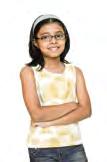
The questions in this section serve as a guide so that through reflection, pupils are able to relate the deterioration of ecosystems to the information they know about them.


This section summarises the concept of interdependence between living things in an ecosystem in a very simple way.




The Target in action is presented. This time, pupils are asked to create a wall display analysing real ecosystems and listing measures that can contribute to conserving it.
The sections of the unit are presented. The concept of ecosystem and its features are developed. The relationship between humanity and ecosystems is then explored, showing their role as a source of resources and services as well as the changes they undergo. The unit closes with the concept of sustainability.
Along with the reproduction of the pages of the Pupil's Book, associated digital resources are indicated. Activities are suggested that work on communication skills; guidelines are offered for applying the thinking keys, didactic suggestions under the title Keep in mind, and the connection to the unit’s learning experience is indicated.
las S room materials
Social S cience
Global Thinkers offers a careful selection of quality materials for each course, that are designed to consolidate and motivate learning through practical activities, discovery and play. Its is presented in two classroom boxes: one for the Natural Sciencie topics, and another one for the Social Sciencie areas.
1..°
Posters:
· School
· The village and the city
· Water and the landscape
· The seasons
I spy game:

· Day and night
· Landscapes
· Family
· Home
Flashcards
Posters
4..°
Maps:
· Physical map of Spain
· Political map of Spain
· Physical map of Europe
· Political map of Europe with the EU
· Physical world map
· Political world map
Posters and cards on Prehistory and Ancient Times
Posters
Solar system



El objetivo del juego es reforzar el aprendizaje de los contenidos de historia en un contexto lúdico, identificando los hitos más relevantes de cada edad histórica. Su planteamiento grupal favorece la incorporación de estrategias cooperativas, el respeto a las normas y la regulación de las emociones.
Think, draw, act...
Game: think, draw and act
Flashcards
Posters
2.° 5.°
Maps:
· Physical map of Spain
· Political map of Spain
· Physical map of Europe
· Political map of Europe with the EU
· Physical world map
· Political world map
Posters and cards on the Middle Ages and the Modern Age
Posters
Maps:
6. Cada equipo solo responderá a dos tarjetas seguidas, aunque sus respuestas hayan sido correctas. Si el equipo falla en su respuesta, la tarjeta pasa a manos del para resolverla.
PREPARACIÓN DEL MURAL Y LAS TARJETAS
Para jugar en una superficie vertical como la pared, el tablero y las tarjetas necesitan una mínima preparación. El alumnado podrá participar en ella. Preparación del mural 1. Localizar en el mural, debajo de cada periodo, los espacios marcados. Hay que pegar en ellos las tiras adhesivas.
· Physical map of Spain
· Political map of Spain
· Physical map of Europe
· Political map of Europe with the EU
· Physical world map
· Political world map
Compasses

Game of the periods of history
Posters
3.° 6.°
Maps:
· Physical map of Spain
· Political map of Spain
· Physical map of Europe
· Political map of Europe with the EU


· Physical world map
· Political world map
Posters and cards on the Contemporary Age (19th and 20th-21st centuries)
Posters
Parte dura
2. Las tiras son de doble cara, en el tablero usaremos la más dura. Reservar la otra cara para las tarjetas.
3. Retirar el protector y pegarlo en los espacios marcados en el mural. Repetir en todas las marcas. Preparación de las tarjetas
1. Usar las caras sobrantes de las tiras adhesivas para preparar las tarjetas. protector y pegarlo en las tarjetas en el
Parte blanda
Seed kit
Skeleton die cut



Information cards
Apps of the human body
STEAM protagonists
Deck of scientists
Videos of scientists
Flashcards
Posters
1..° 4..°
Digital microscope and microscopy
Apps of the human body
STEAM protagonists
Scientific story plates
We interview a scientist
Posters
2.°
Containers for waste separation
Information cards
Apps of the human body
STEAM protagonists
Deck of scientists
Videos of scientists
Flashcards




Posters
3.°

Digital microscope and microscopy
Apps of the human body
STEAM protagonists
Scientific story plates
We interview a scientist
Posters
5.°
Digital microscope and microscopy

Apps of the human body
STEAM protagonists
Scientist cards
Science videos
Scientist murals
We interview a scientist
Posters
6.°
Assembly kit forelectrical machines




Apps of the human body






STEAM protagonists

Scientist cards


Science videos

Scientist murals
Escape games
We interview a scientist
Posters

Focus on competence
In the classroom material box
STEAM protagonists
STEAM protagonists are an interdisciplinary project that combines science, technology, engineering, mathematics and art in a practical and playful way. An open-focus proposal designed to encourage curiosity in the face of fear of error, which integrates art and creativity through illustration, stories,


What does it offer?
Interdisciplinarity
Learning by doing

Emotional education
Gamification

Developing thinking
anayaeducacion.es
What does it offer?

For the pupils
Pupils have specific resources for each of the scientists in the project. Through these resources, and the different proposals for gamification, research, etc., pupils will discover relevant figures in the history of science and technology. These figures will serve as inspiration, both for their scientific contributions and for their human qualities, values and ability to cooperate.
Depending on the course, the resources associated with each protagonist are: decks of cards, stories, worksheets or posters, including several team games.

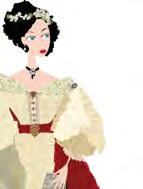


For teachers
Teachers have a printed Teacher’s Guide that is specifically related to the development of the STEAM project for each course. These teacher’s resources include:
• A summary file with biographical data and the legacy of each of the STEAM protagonists.

• A description of the material designed for pupils, both from the classroom material box and at anayaeducacion digital.








• Suggestions for playing and learning with the cards, stories, poems, interviews, challenges and videos of each course.





For the pupils
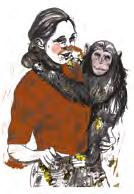















In order to investigate and enjoy discovering the scientists in the STEAM project, specific digital resources for each course have been designed for pupils, such as audio poems, short stories (in mp3 and mp4 format) and video animations associated with term reviews.





For teachers



Teachers have resources designed for the STEAM protagonists of each course, such as: video animations, audio or interactive interviews, as well as various printable materials (tinkering tasks, poems, gamifying elements, portfolio cards, etc.) to work with each project’s content.



Di G i T al project
A digital project covering all course content which adapts to any platform and device.
Versatile
Adaptable to different approaches and needs: for those who complement the paper book and for fully digital classrooms.
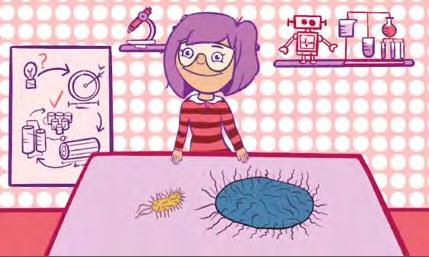

Traceable

You will be able to visualise the completion and results of the proposed activities.
What i S e dudynamic like?

Intuitive. Easy to use for you and your students.
Downloadable. You can use it without an internet connection and download it to more than one device.
Multi device. It adapts to any type of device (computer, tablet, smartphone, etc ) and works with any screen size and resolution.

Interactive
Contains a variety of resources such as videos, animations, gamification, self-assessment activities and self-correcting interactive activities
It is much more than a copy of the paper book.
Inclusive
Its environment facilitates the personalisation of learning by adapting the tasks to the pupils' needs.





Skills
Multimedia elements of high educational value designed to facilitate the acquisition of digital skills.

Synchronisable. Any changes made by the user are automatically synchronized when connecting any of the devices that they are using.





Universal. Compatible with all operating systems, virtual learning environments (VLE) and educational platforms most commonly-used in schools.
a n D for the s TUD ent S ?

For Year 1 and Year 2, an active book combines the digital version of the pupil’s book with the resources developed for the multimedia and interactive reproduction of all the contents of the course, gamification, audio, video, etc.
For classroom work and homework, the active book can be used as a digital complement to the printed book or as an independent learning tool.
From Year 3 to Year 6, a specially designed format for the educational digital environment, using all the technological potential and is compatible with any device. Specific editions of all the theoretical and practical contents of the textbook have been made to obtain an interactive and dynamic version that includes all the curricular content corresponding to that level, together with a wide variety of multimedia resources, videos, gamification.
What doe S i T offer?
Resources
Active methodologies (techniques and strategies) and resources for:



• Show: videos, presentations...

• Study: summaries, interactive activities...




• Learn: Game Room, recreational...


• Evaluate: self-assessment, portfolio...



Inclusion and attention to diversity

• Inclusiveness e-tools.
• De cerca
• Attention to diversity: reinforcement, multilevel and expansion worksheets.


Evaluation
• Generator of evaluation and exercise tests.
• Competence evaluation.
• Final evaluation.
• Assessment instruments, self-assessment and co-assessment.
• Instruments to evaluate teaching practice.
• GYM competitions.
Programming, teacher’s guides and documentation of the project
• The keys to Global Thinkers.
• Teacher’s guides.
• Schedules.
ResourcesInclusIonandattentiontodIversityAssessmentammIng,teacher’sguidesanddocumentationofthepRoject


Inclus I on and attention to d I versity resou Rce
s

Resources related to the project’s keys

Digital resources ordered both by units and by their most substantial educational purposes





UDL Guidelines
Attention to diversity worksheets
Digital tools
Prog R amm I ng, teacher’s guide and documentation of the p Roject Assessment
Pre-designed evaluation tests


The keys to Global Thinkers
Toolbox for evaluation, self-assessment and co-assessment




Evaluation and exercise item generator Schedules. With the Word and PDF versions

Tools to evaluate teaching practice
Teacher’s guide

resou R ce s
Resources rel A ted to the p Roject’s keys
ICT WE CREATE A DIGITAL CONTENT
PLAN
What is a word processor?
To write with the computer or tablet, you can use computer applications called word processors. The most popular ones are Word and Google Docs.

With these programs, you can write, delete, print, and choose the way of writing among a multitude of options: bold, italics, underlining, different colors...
PORTFOLIO
Options bar and toolbar
You can choose between multitude of options: type, size, color of lettering; copy and paste text; save and print document; search for words in of the text; include images and figures...
Cursor View Options to choose how the document looks like on the screen.
Name of document Area for text
Audios

Text options
You can choose the typeface: if it goes in bold, italic or underlined. You can also choose the color of the lettering, the size or highlighting.
Status bar It contains information about the document: number of pages, number of words...
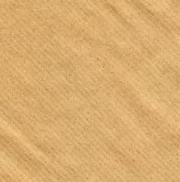

Another type of digital creation are sound recordings or audios. There are numerous digital tools and applications to make, play and transmit audios, for example, Speaker Studio.
1/4
ICT WORKSHEET 1
PLAN
WE USE ICTS
Information and communication technologies (ICTs) are tools that can be used to help us perform many tasks such as searching for information, writing, playing … They are also useful for communicating with other people and sharing text and images. In order to use ICTs we need an ICT device or machine, which is a compound machine that uses electrical energy or electricity to operate.
Which are the ICT devices?

Word work environment 1/3
Laptop computers are smaller and weigh less, so that they can be moved easily from one place to another.


On/off button
On/off button
can be connected to the mobile phone or tablet. Volume control button
a)Findtheoddoneoutineachofthesegroups: Cocci,Spirochaeta,yeasts,vibrios. b) Moulds,mushrooms,bacteria,yeasts. c) Poppies,clover,greenalgae,mosses. d) Worms,trout,gorillas,bats.
WE SEARCH FOR INFORMATION
PLAN
ICT WORKSHEET 3
Search engines and keywords are used to search for information on the Internet.
Search engines are computer tools that are used to find information on the Internet: texts, images, videos, news... ATTENTION. The keywords that are typed in the search engine serve to filter the information being searched for, so that the tool only searches for documents, images or videos that have those words.
What does a web browser look like? Search bar. To write the keywords and start the search.
Anaya Educación
Search results.
To view the results of the search and access them.
MoreTools

https://www.anayaeducacion.es
Anaya Educación: textbooks, complementary material and ...











Anaya has been working in the educative sector with materials and projects adapted to all levels and areas for more than fifty years.
ANAYA Students
Publications, content, and up to date resources ...
Searching for images on the Internet
In the search engine, in addition to finding web pages, you can also search for images. To do this, select the “Image” option in the search.
whales
Google logo, one of the most popular search engines.


1/3
Search options. To choose the type of information that you want to search for: images, documents...videos,and filter the search by language, date...
Not all the images on the web can be used. Most of them belong to someone or have an author to whom we must ask permission for its use or publication.
With the information that pupils need to handle to put into practice the keys and active methodologies of Global Thinkers.
'Infographics of the Communication Programme and the TIC-TAC plan..
d igita L resou Rces o R dered both bY units and bY the I r most subst A nti A l education A l pur Poses
To learn
• Videos.
• Presentations.
• Audios.
100%
To study and practise
• Summaries.
• Mindmaps.
• Interactive activities.
A terrestrial ecosystem, with many deciduous trees and animals such as hoopoes, wolves, and stag beetles.
Unit album
The basis of this rich aquatic ecosystem are the limestone “buildings” formed by cnidarians.
How do living things relate to each other in their ecosystem? 4 Put glue in this area Put glue in this area Put glue in this area Put glue in this area
These two living beings have a food relationship. One produces its food and the other eats it to obtain it.
What damage do we cause to ecosystems?
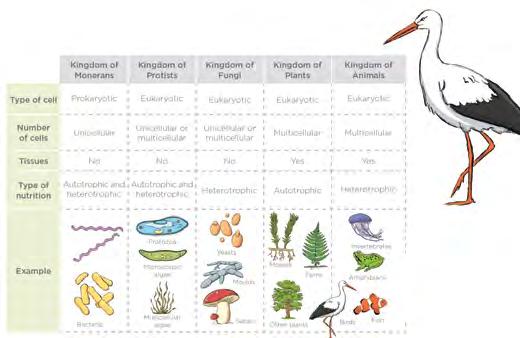
This fish is suffering from the effects of overfishing. There are fewer and fewer of its species left.
With this action we help reduce pollution, save energy and exercise.

Glue it here and glue it on the left side of the other page
Guess the ecosystem Put glue in this area Put glue in this area Put glue in this area
These beings have a cooperative relationship. One gets food and the other transports its pollen to other flowers.
This ecosystem has been badly damaged due to a catastrophe caused by humans.
With this action we help to recycle waste and prevent it from accumulating in nature.
In this ecosystem, many inert elements are artificial and among the living beings the human being stands out.

These two animals have a competitive relationship. They both feed on the same thing and fight for it.
This species is endangered, as its ecosystem, the Arctic, is highly threatened by global warming.
Put glue in this area Put glue in this area Put glue in this area
With this action we help to conserve ecosystems and create environmental awareness.
Ecosystems are sets of related living and nonliving elements. Every living being is related to the living and inert elements of its ecosystem. We deplete resources, pollute, dump waste, and destroy ecosystems. Respecting nature and making a sustainable use of its resources.
To play
• Games.
• Fun term reviews.
• Game room: Ultimate travellers.

• And to continue playing, you have fun resources within the classroom materials.


To evaluate
• Activities and interactive tests with traceability, which facilitate the monitoring of pupil progress by teachers.




• And recommended apps, which complement the TCT plan proposed in the project.

Inclus Ion and A ttent I on to d I versity ud
gu I del I nes
The different elements of the Global Thinkers project are designed taking into account the principles of Universal Design for Learning (UDL).

ud l guI d elInes in g lobal THI n KERS
The different elements of the Operation World Project are designed taking the principles of Universal Design for Learning (UDL) into account. The following table shows the relationship between the UDL principles or guidelines and the elements of the project:
GLOBAL THINKERS
Learning experience
SDG
Image and context
What do you think?
Context
Target in action
UDL guidelines applied in the project
PRINTED MATERIAL
• The direct relationship with the SDGs (challenges of the 21st century) and with the daily life of pupils optimises relevance, value and authenticity (7.2).
• An alternative representation of the text facilitates the understanding and the personal connection with the context of the Learning Experience (2.5).
• The questions link the Learning Experience with the pupils' experiences and knowledge (3.1).
• It provides objective and verifiable information about the importance of the target in action (8.1).
• It stimulates collective reflection using a useful thinking strategy which can be used to deal with everyday problems (9.2).
• It encourages independence by proposing a final product which is open to contextualization in the center and allows the pupils to choose (7.1), varying the levels of difficulty (8.2).
• Facilitates generalisation and transfer of essential learning (3.4).
• It promotes community and collaboration for the collective creation and presentation of the final product (8.3).
DIGITAL ENVIRONMENT
• Give teachers and pupils access to updated information about the SDGs using various means of communication (5.1).
• What do I know? It suggests traceable interactive activities to detect previous ideas at the start of the unit (3.1).
• It uses audiovisual materials that present learning experiences, stimulating expectations and beliefs that increase motivation (9.1) at the start of the unit.
• In each unit, further information from selected sources is presented in different formats to provide alternatives to auditory (1.2) and visual (1.3) information to represent the text (2.5): songs, subtitled audio or video, locutions of textual information, graphical organisers, visual thinking, etc. also usable to stimulate participation.

A ttent I on to d I versity Wor Ksheets
They enable:
• Finding support materials.
• Providing individualised attention.
• Adapting contents to different learning rhythms.
AM
9:45
a) Heterotrophic living organisms, such as plants, cannot make their own nutrients.
b) The function of interaction consists of perceiving things and reacting to them.
c) The vital functions are nutrition, interaction, reproduction and excretion.


d) In sexual and asexual reproduction, only one individual is needed.

e) Gametes are the reproductive cells in asexual reproduction.
9:45 AM
answer using classification criteria.
a) Multicellular algae
b) Fern
c) Mammal
d) Mold
i) Bacteria
4 Make a diagram in which you explain the characteristics and groups into Name and surname: 2 Science 5 3 FILE


1 Look at this image of a paramecium. Name the parts that appear in it. If there is one that you do not know, find out what it is.


1 3 4 5 2 2 Science 5 Date: Name and surname: FILE UNIT
a) What function does the part you did not know perfom in the cell?
b) In which kingdom is this living organism classified? In what group within that kingdom?
2 Science 5 Date: Name and surname: 2 FILE Prokaryote Eukaryote Common structures Size Complexity Organelles Nucleus Schematic drawing 61 9:45 AM 100% iPad 1 Write below each illustration the related vital function. 2 Observe this cell and colour the cytoplasm with one colour, the organelles with another and the nucleus with the genetic material with another. C It is a cell: Cytoplasm Organelles Nucleus and genetic material 2 Science 5 Date: Name and surname: 1 FILE E 58 A C D B 9:45 AM 100% iPad 67
Pre-des I gned eva Lu A t I on tests
To assess prior knowledge and progress in the course:
• Initial evaluation.
• Final evaluation.
For each unit:
• Evaluation.
• Competence-based evaluation.
For each term:
iPad 7272
Name
9:45 AM 100%
2 Science 5 EV
7 Explain the difference between vertebrate and invertebrate.


8 Match the following organs and systems with the corresponding functions: locomotor, nervous, respiratory, circulatory, excretory and digestive
Nutrition:
Relationship:

a) What process is represented in them?
b) Briefly describe what does each process consist of?
10 Carnivorous plants close their leaves when an insect grazes against them. Does this mean that it feeds on insects? Justify your answer
2
9:45 AM
Science 5 Date: Name
2. Stand at the exit point of the game.
3. Proceed along the track (following the direction of the arrow).

4. At each intersection you come across, decide which way to go based on the shape of the leaf you have chosen and the message on each sign.
Heart-shaped leaf
Long and narrow blade
Sheet of another shape
Scale-shaped leaf



Cypress

Sheet of another shape
Weeping willow London plane
Duck foot blade EXIT
evA luation and exe Rc I se I tem gener A tor
A tool that teachers can use to flexibly design written tests by choosing the points they wish to evaluate or practise (part of a unit, a complete unit, a learning situation, etc.) according to their teaching objectives.


Name and surname: EV
2 Science 5 Date:
They have an internal skeleton. They are autotrophs. They are heterotrophs.
g) Which of these animals is an invertebrate?
Fish.
Plus...
b) The cells: They are organised into tissues. They are organised into organs. They are organised into devices.
c) Autotrophic beings are:
Plants and fungi.
Plants and animals.
Plants and algae.
d) Which of the following functions is not vital for living things?
Be nourished.
Walk.
Breed.
e) Which of these characteristics belongs to the Protista kingdom?
Includes protozoa and algae.
Includes bacteria and protozoa.
Includes bacteria and algae
f) What characteristics is common to all animals?
Reptile.
Mollusc.
h) Fungi can be: Unicellular fungi such as yeasts, molds such as those that grow on fruit, and fungi that form mushrooms such as champignon mushrooms. Unicellular fungi such as yeasts and molds such as mushrooms.
Molds such as those that grow on mushrooms and unicellular fungi such as yeasts.
i) Which of these terms is not related to the Monera kingdom? Bacteria. Spirilla. Pseudopods.
j) The cnidarians: They are land animals. They have tentacles around the mouth. They have a hard shell.
• Toolbox for evaluation, self-assessment and co-assessment. With a broad base of rubrics, targets, and other instruments designed by specialists to provide teachers with a set of tools to carry out assessment, self-assessment, and co-assessment.
• Tools to evaluate teaching practice.

Prog R amm I ng, teacher’s guide and document A t I on of the p R oject
t he keys to g lob A l th I n K e Rs
• Includes extensive materials for the keys and active methodologies developed in the project.
te Ache R' s gu I de
• Integrates the PDF version into the teacher’s guide.

schedu L es. With the Wo R d and P df versions of:
• Syllabus.
• Unit programming.
• Evaluation records.
Programación
Muestra programación. Situación de aprendizaje
Modelo de situación de aprendizaje elaborado según esquema del Proyecto de Orden por el que se desarrolla el currículo correspondiente a la etapa de Educación Primaria en la Comunidad Autónoma de Andalucía. Este modelo podrá
se presenta en esta situación de aprendizaje como eje vertebrador del trabajo del alumnado. Por ello, la conexión que tiene el “Objetivo en acción” con el respeto medioambiental, centrado principalmente en el estudio y cuidado de un espacio natural cercano al alumnado,ayudará a considerarlosaspectosmásrelevantesde la situación de aprendizaje.Entre otros,destacan los saberes vinculados al conocimiento de los ecosistemas, las rocas y el relieve, y lo concerniente a cómo puede alterarse y de qué manera favorecer la protección de los entornosnaturales.
Por ello, aparece una clara relación del trabajo con el Objetivo de Desarrollo Sostenible nº 15, Vida de ecosistemas terrestres En este caso, el abordaje de este objetivo ysusmetasse focaliza en losespaciosnaturalesen losque habitan losseresvivos. En la situación de aprendizaje encontraremos varias propuestas competenciales, facilitando la aproximación al conocimiento análisis de los ecosistemas.Se presentan experienciasque ayudarán de manera vivenciala comprenderque haycomponentesno vivosen estrecha relación con los seres que habitan el planeta, actividades sobre el riesgo de extinción de algunas especies animales y una propuesta para aproximarse a las profesionesvinculadascon la conservación delmedio ambiente.
3. DESCRIPCIÓN DEL PRODUCTO FINAL En esta situación de aprendizaje el producto final propuesto es un mural en el que se explica cómo es un ecosistema conocido por el alumnado y cómo puede protegerse. Con la elaboración de este producto se pretende visibilizar el trabajo competencial del alumnado, facilitando la circulación de los saberes básicos y las competencias clave y específicas de la situación de aprendizaje.

4. CONCRECIÓN CURRICULAR COMPETENCIAS ESPECIFICAS
1. Utilizar dispositivos y recursos digitales de forma segura, responsable eficiente, para buscar información, comunicarse y trabajar de manera individual, en equipo y en red, y para reelaborar y crear contenido digital de acuerdo con las necesidades digitales del contexto educativo.
DESCRIPTORES OPERATIVOS: CCL3, STEM4, CD1, CD2, CD3, CD4, CD5, CCEC4.
CRITERIOS DE EVALUACIÓN SABERES BÁSICOS EVIDENCIAS Actividades y ejercicios
1.1.a. Utilizar dispositivos y recursos digitales, de acuerdo con las necesidades del contexto educativo de forma segura, iniciándose en la búsqueda de información, a través del uso de estrategias básicas de comunicación, trabajando de forma individual y en equipo y creando con ayuda contenidos digitales sencillos.

CM.02.B.1.1. Dispositivos y recursos digitales de acuerdo con las necesidades del contexto educativo. CM.02.B.1.4. Recursos y plataformas digitales restringidas y seguras para comunicarse con otras personas. Etiqueta digital, reglas básicas de cortesía y respeto y estrategias para resolver problemas en la comunicación digital.
Todo está conectado (pág. 43) «La madeja que nos conecta» «Te lo cuento en un momento» Algunos ecosistemas andaluces (pág. 48 Plan TIC-TAC (pág. 55) Ficha «Creamos contenidos digitales» Ficha «Utilizamos las TIC de forma saludable y sostenible». El símbolo sostenible (pág. 55) ¿Qué he aprendido? (pág. 56) Objetivo en acción.
2. Plantear y dar respuesta a cuestiones científicas sencillas, utilizando diferentes técnicas, instrumentos y modelos propios del pensamiento científico, para nterpretar explicar hechos y fenómenos que ocurren en el medio natural, social y cultural.
DESCRIPTORES OPERATIVOS: CCL1, CCL2, CCL3, STEM2, STEM4, CD1, CD2, CC4.
2.1.a. Demostrar curiosidad por el medio natural, social y cultural que tiene lugar a su alrededor, formulando preguntas, realizando predicciones y comenzando a establecer de forma guiada el razonamiento de estas.
CM.02.A.1.4. Fomento de la curiosidad, la iniciativa y la constancia en la realización de las diferentes investigaciones, así como en la lectura de textos divulgativos científicos.
CM.02.A.1.6. La importancia del uso de la ciencia y la tecnología para ayudar a comprender las causas de las propias acciones, tomar decisiones razonadas y realizar tareas de forma más eficiente.
Página inicial (pág. 40) Situación de aprendizaje: cómo lo ves, el dato y objetivo en acción. Todo está conectado (pág. 43 Actividad competencial. Mi profesión: ingeniero forestal y urbanista (pág. 51) Actividad competencial. ¿Qué he aprendido? (pág. 56) Actividades 4 y 5.
demo LEARNING eXPERIeNCE

TEAchER’s GUIde

LOOKING AFTER NATURE!
UNIT OUTLINE
Ecosystems
They can be
land aquatic
An ecosystem is all the living things in a place, and the environment where they live. Living things interact with the environment and with each other.

They have to do with the way in which living things obtain food.
Feeding relationships in ecosystems
They are represented by food chains.
Air, sun, water and rocks.
Non-living things in ecosystems
There are many types of rocks. They form the relief.
food
water
raw materials
land
wellbeing
Ecosystems provide
Natural resources
Natural resources are the things in nature that we use or take.
Sometimes, obtaining these resources can lead to
overexploitation
pollution
occupation of space
extinction of living things
global warming
How do we take care of ecosystems?
Recycle
Reuse Save water

Save energy
Respect nature
¿QUÉ VAMOS A APRENDER? WHAT ARE WE GOING TO LEARN? RESOURCES
Opening Page
Learning experience: What do you think?, What is going on around you?, What can you do to help?, What do you need to know to take action? SDG 15: Life on land
Ecosystems
Where do living things live?
Initial video
SDG video: Goal 15
Worksheets ‘ICT Plan’
Worksheets: ‘Learn how to use Scratch’
Video. ‘What is an ecosystem?’
Animation. ‘I´ll tell you in a moment: the caterpillars are disappearing!’
Videos ‘Some terrestrial and aquatic ecosystems’; ‘Adaptations’
Presentation `Most relevant landforms´
Document ‘Producers, consumers, decomposers’; ‘Adaptations’
Interactive activities
Relationships in ecosystems
How do living things interact with the ecosystem?
Rocks
What are the non-living things in an ecosystem like?
Relief
What rocks shape the relief?
Types of ecosystems in Andalucía
What are the main ecosystems in Andalucía?
Using ecosystems
How do humans interact with ecosystem?
Changing ecosystems
How do we damage ecosystems?
Protecting ecosystems
How can we take care of ecosystems?
My visual summary
Ecosystems. Humans and ecosystems. Looking after ecosystems.
Portfolio
What have I learned?
Target in action
How have I learned?
Video ‘Food and ecosystems’
Animations ‘Curiosities: how many teeth does a snail have? Why are ants said to be very strong?’
Interactive activities
Interactive activities
Presentation. ‘The most important forms of relief’
Interactive activities
Interactive activities
Video. ‘Food and ecosystems’
Interactive activities
Animation. ‘I’ll tell you in a moment. Valentin’s lake’
Videos. ‘Humans damage the environment’; ‘Sustainable eating’
Worksheet 2 ‘ICT Plan’
Interactive activities
Video. ‘The importance of recycling’
Worksheet 5 ‘ICT Plan’
Interactive activities
Interactive activities
Photo album of the unit
Interactive activities
Game Room
The essentials
Reinforcement sheets (levels 1 and 2)
Extension sheet
Assessment item generator
Assessments: basic and competence-based
Microscope
STEAM Stars: materials to learn about the figure of Maria Sibylla Merian
Resources
Digital resources
Initial video
SDG video: Goal 15
Worksheets ‘ICT Plan’
Worksheets: ‘Learn how to use Scratch’
LOOKING AFTER NATURE!
When one part of an ecosystem disappears, the entire ecosystem suffers the consequences.

What living and non-living thigs are there in the picture? How can humans damage
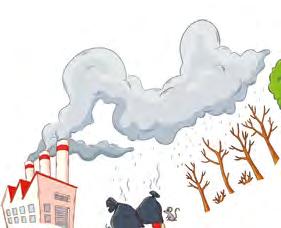
WHAT Is GOING On arOUND you?
All living things depend on other living things. Squirrels need trees to live in and humans use many natural resources. Create a wall display about a real ecosystem and how to protect it.
LEARNING ExPERIENcE SDGs OPENING ImAgE
This learning experience presents how an ecosystem should be full of living and nonliving things and the importance diversity in an ecosystem. The learning experience is used to spark reflection and learn about ecosystems, their importance and how fragile they could be.
SDG 15. Life below water: Protect, restore and promote sustainable use of terrestrial ecosystems, sustainably manage forests, combat desertification, and halt and reverse land degradation and halt biodiversity loss.

The main image asks pupils to reflect on the importance of variety in an ecosystem. It includes a picture of a diverse ecosystem, full of living and non-living things. It also presents a girl expressing the importance of ecosystems and how crucial it is to take care of them, since if a part of the ecosystem disappears, the entire ecosystem will suffer severe consequences.

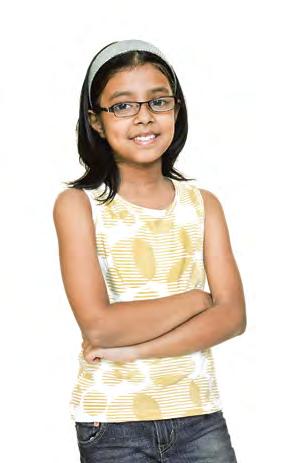
The questions in this section serve as a guide so that through reflection, pupils are able to relate the deterioration of ecosystems to the information they know about them.


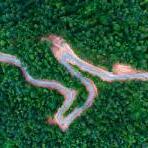

This section summarises the concept of interdependence between living things in an ecosystem in a very simple way.



Complementary activities
To motivate learning
• Outline the initial learning experience through the introductory text and the main image.
• Answer to the first question of the What do you think? section. You may write down on the board the amount of living things pupils know.

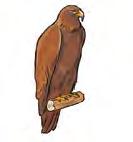
• Answer to the second question of the What do you think? section. You may elicit some answers too, in order to help pupils answer this question accurately.
The Target in action is presented. This time, pupils are asked to create a wall display analysing real ecosystems and listing measures that can contribute to conserving it.
The sections of the unit are presented. The concept of ecosystem and its features are developed. The relationship between humanity and ecosystems is then explored, showing their role as a source of resources and services as well as the changes they undergo. The unit closes with the concept of sustainability.
Resources
Digital resources
Video. ‘What is an ecosystem?’ Animation. ‘Give me a moment to tell you about it. the caterpillars are disappearing!’

Document ‘Producers, consumers, decomposers’
Interactive activities
WHErE Do LIVInG THInGS LIVE?
Can living things exist without their environment?
1 Look, listen and read.
An ecosystem is all the living things in a place, and the environment where they live.

Living things interact with the environment and with each other.
An ecosystem consists of living things
the relationships between all these elements
CONNEcTI ON TO ThE LEARNING Ex PERIEN cE
The introductory question presents the idea of interdependence in the context of the biosphere in a very simple way, clarifying the metaphor presented in the initial situation through the row of dominoes. The Take note! section stresses that this interdependence is found among all living things.
Answer key
2 Look at the pictures above and answer.
a) Name the living things in the ecosystem.
b) Name the elements in the environment.
c) What non-living things do these living things need?
In pairs, choose a living or a non-living thing. Then, ask yes or no questions and guess.
Yes, I have. / No, I haven’t.
Yes, I am. / No, I’m not. zebrawater air snaketree
NOW I KNOW…
Have you got fur/legs/wings/ beak/leaves?
Are you big/ small/green/hot/ cold/hard/soft?

Animals, plants and other living things cannot live alone. They all depend on other living things.
Complementary activities
CHECK WHAT YoU LEArnED
1 Play the recording and listen. Then, ask pupils to read.
2 a) Zebras, gazelles, wildebeests, grasses and acacias.

b) Open answer: The ecosystem shown corresponds to a savanna: tropical climate with clearlydefined dry and rainy seasons. Flat land. Presence of shallow seasonal ponds. Open tree cover. Vegetation dominated by grasses and shrubs. Presence of large communities of herbivorous animals.


c) Open answer: A wildebeest is seen feeding on a creeping shrub. A gazelle is feeding on grass.


3 Open answer. Watch your pupils’ grammar.
To extend learning
• Do you believe that an ecosystem consisting only of living things can exist? Support your answer. Answer: it is not possible. The physical environment and the interactions between it and living beings are essential components of an ecosystem.
2 Relationships in ecosystems
HoW Do LIVInG THInGS InTErACT WITH THE ECoSYSTEM?
THINK
How do living things interact with other living things?
1 Look, listen and read.
There are different types of relationships between the living things in an ecosystem. The most important ones are feeding relationships.
Plants
EVE rYTHI n G IS ConnECTED
1 Look and do the activities.
Food chains represent who eats who in an ecosystem.
Check the digital resources available at anayaeducacion.es
Keep in mind
• Pupils have already studied living things and their classification, celular organizational level was introduced and the vital functions were described. In this unit, we jump to an organizational level higher than the organism: the ecosystem.
Materials
• A ball of yarn
• Cards with living and non-living things
Ants build anthills in the soil. Bees take pollen from one flower to another.
Squirrels eat fruit from trees.
Squirrels and birds drink water from the pond.
Bird
Bee Sun

Squirrels live in trees. Birds eat insects (ants and bees).

Tree
Squirrel Ant Pond
Plants use light to make food.
Soil
a) Copy and colour the pictures in your notebook. Read the clues and draw lines to connect them.
b) Classify them into living and non-living things.
c) Show the relationships in this ecosystem. You need a ball of yarn and cards. See ‘We are all connected’ at anayaeducacion.es

Go to ‘I'll tell you in a moment’ at anayaeducacion.es to learn more about the relationships between the living things in an ecosystem.

Answer key
1
Plants get water and mineral substances from the soil.
Squirrels are living things.
CHECK
WHAT
YoU LEArnED
NOW I KNOW…
All the living things in an ecosystem interact.
• The concept of ecosystem can be abstract for children of this age. This concept should be approached using situations that are familiar to pupils. One possibility would be to use the school in the figurative sense of an ecosystem, identifying the biotic elements, the components of the environment and the relationships among all these components.
• When describing ecosystems, attention is often focused on the biotic and abiotic elements, while the relationships among the elements that make up an ecosystem are often overlooked.
1 Play the recording and listen. Then, ask pupils to read.
Everything is connected
a) Check your pupil’s work.
b) Living things: squirrel, bird, bee, ant, tree


Non-living things: sun, soil, pong.
c) Remember that we refer to the interaction of living things.
Feeding relationships
– The bird eats insects.
– The ants eat leaf litter.

– The bee obtains nectar from flowers to make honey.
– The squirrel eats fruit from trees.
Non-feeding relationships
– The bird collects twigs from the tree to make its nest.


– The squirrel lives in the tree.
– The flowers of the tree transform into fruit thanks to the pollen carried by the bees.
– The squirrel and the bird drink water from the pond. Note: This relationship may not be obvious, but it does suggest a possible competitive relationship.
Complementary activities
To extend learning
• Do you think a crater on the Moon can be considered an ecosystem? Support your answer.

Answer: no. There are no living beings on the Moon and they are necessary for there to be an ‘ecosystem’.
Resources
Digital resources
Interactive activities
3 Rocks
WHAT ArE THE non-LIVInG THInGS In An ECoSYSTEM LIKE?
THINK
What non-living things can you find in nature?
1 Look, listen and read. Some of the non-living things in an ecosystem are the air, the sun, climate and rocks. Rocks form the ground we live on. Rocks have got different shapes, colours and sizes. They appear in different ways in nature.
Types of rocks
Granite Slate Basalt Limestone
It is very hard. Its components are black, white and pink.
It is hard. It is usually grey or black. It has got layers.
It is a volcanic rock. It is very hard. It can be grey or black.

2 Read the definitions and match them to the correct rock.
a) It is usually grey or black. It has got layers.
b) It is very hard. It has got three different components.
c) It can contain fossils.
d) It is a volcanic rock and it is very hard.
3
What are the differences between marble and obsidian? Look at the pictures and describe them.


What is marble like?
Marble is white/black. It is hard/medium-hard/soft.
Answer key
1 Play the recording and listen. Then, ask pupils to read.
2 a) slate
b) granite
c) limestone
d) basalt

3 Open answer. Watch your pupils’ grammar.
4 Open answer. Watch your pupils’ grammar.
Rocks and minerals
1 a) pyrite
b) quartz
c) diamond
d) talc
e) sulphur
2 a) We can use slate for building
3 b) We can use limestone for furniture

4 c) We can use granite for sculpting
5 d) We can use diamonds for jewellry.
It is medium-hard. It can be white, grey or brown. It can contain fossils.

basalt slate
limestone granite
marble obsidian
ro CKS A n D MI nEr ALS
Rocks contain minerals. There are many different types of minerals. They can have different shapes, brightness, hardness and colours.
1 Look and match the properties to the correct mineral.
a) It is very hard.
b) It has got geometric shapes.

c) It is shiny.
d) It is soft.
e) It is yellow.

2 We can make objects using rocks and minerals. Look at the pictures and complete the sentences with the correct words.
a) We can use ••• for •••
b) We can use ••• for •••
c) We can use ••• for •••
d) We can use ••• for •••
Choose a mineral or a rock. Then, ask questions and guess. 4
Is it smooth/rough?
Is it hard/soft?
It’s green/yellow/black.
It shines. / It doesn’t shine.
Keep in mind
• It is likely that the pupils have not yet been exposed to the contents of the field of geology. This is therefore an excellent opportunity to awaken their interest in this field.
• A good tool is, in this case, the use of images of landscapes that can provoke their astonishment and arouse their curiosity to learn about the processes of formation of these landscapes. This aspect can also be worked on through the resource ‘photo album of the unit’ collected in their ‘Portfolio’.
NOW I KNOW…
We can find different types of rocks and minerals in nature.
Complementary activities
To extend learning
• Find information about the components of granite: what are they? what are they called? what are their characteristics?





Answer: granite is mainly made up of three different minerals.
1. Quartz: it is one of the most abundant minerals on our planet. It is translucent, can have different colours, and its hardness is high.
2. Feldspar: it is an opaque mineral, which usually has a whitish or pinkish colour. Medium to high hardness.



3. Mica: a mineral that appears in groups of flexible and translucent sheets. Very soft.


• Research: what can be around you, in your house or in your classroom, that is made of rocks?
Answer: open answer. It will depend on what the pupils observe around them. They might find items made of rocks in their bathroom or kitchen at home, for example (countertops or floors). If they can see a park or playground from the classroom, there are probably rocks there too.

Resources
Digital resources
Presentation. ‘The most important forms of relief’
Interactive activities
WHAT roCKS SHAPE THE rELIEF?
Why are rocks so important? THINK
1 Look, listen and read. The different types of rocks in an ecosystem determine the landforms in the area. Relief is all the landforms in an area.





Different rocks form different types of relief
Answer key
1 Play the recording and listen. Then, ask pupils to read.
2 1 limestone
2 slate
3 basalt

4 granite
3 Open answer. You may revise your pupils’ descriptions first. Then, watch your pupils’ grammar.
Complementary activities
To extend learning
• You probably know of landscapes that you have walked through or visited while on holiday that have caught your attention because there was a particularly large rock formation, a mountain or some other curiosity. Make a short presentation to tell your classmates and colleagues about the landscape you liked so much.

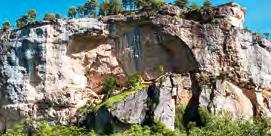

Keep in mind
• Sometimes, the ‘non-mobile’ components of an ecosystem, with few exceptions, tend to go unnoticed by pupils. It is important to highlight the interest and influence that rocks have as components of the environment in which they live.

• The processes of formation of the different types of rocks have not been discussed in depth, as this will be covered in future lessons. However, pupils are encouraged to look at the characteristics of certain specimens, representative of the different groups of rocks, so that they can begin to become familiar with them.


Resources
Digital resources
Interactive activities
Answer key
5 Types of ecosystems in Andalucía
WHAT ArE THE MAIn ECoSYSTEMS In AnDALUCÍA?
THINK
How many different ecosystems can you identify near you?
1 Look, listen and read.
Ecosystems can be terrestrial or aquatic. In natural ecosystems, there is no human intervention. In artificial ecosystems, humans change the environment.
Types of ecosystems in Andalucía
Mediterranean forest
Beach
Plants: holm oaks, cork oaks, rockrose and rosemary. Animals: insects, dormice, rabbits, deer, wild boars, birds and lynx.
Marsh
Plants: glasswort, houseleek and sandwort. Animals: aquatic birds, fish, jellyfish, crabs, starfish, sea urchins and octopuses.

Dehesa
Plants: rushes and reeds. Animals: aquatic birds (ducks and cranes), fish and invertebrates.


Plants: holm oaks and pasture. Animals: birds of prey, reptiles, amphibians, and farm animals, such as pigs.





Choose a forest, a marsh, a beach or a dehesa near you and draw it. Name the animals and plants you can see. Draw a food chain. Then, describe it to a classmate.
The animals/plants in this ecosystem are rabbits/ crabs/rushes/pastures...
1 Play the recording and listen. Then, ask pupils to read.
2 Open answer. You may revise your pupils’ food chains. Then, watch your pupils’ grammar.
Types of ecosystems
1 a) Open answer. Check your pupils’ drawings.
b) Open answer. Watch your pupils’ grammar.
c) Terrestrial ecosystem: turkey, wild boar, spider, squirrel, lynx. Aquatic ecosystem: jellyfish, lobster, squid, seal.

TYPES o F ECo SYSTEMS
We classify ecosystems by the type of environment. Ecosystems can be terrestrial or aquatic.
1 Look at the pictures and answer the questions.
a) Draw a food chain for each ecosystem. Include at least one plant and two animals.
b) Why are those ecosystems terrestrial and aquatic? Explain your answer and describe them to a classmate.
c) Look at the pictures below. Do the animals live in terrestrial or aquatic ecosystems?







The animals in aquatic ecosystems live in water.




Check the digital resources available at anayaeducacion.es
Keep in mind
• Meaningful learning remains an effective methodology, which allows pupils to acquire knowledge from the proximity and familiarity of their daily environment. It is therefore interesting, in this and similar cases, to use spaces close to the pupils’ environment to explain the different contents of the unit, and specifically of this section.
There are many different ecosystems, like rivers, ponds and forests.
See ‘Terrestrial and aquatic ecosystems’ at anayaeducacion.es
Complementary activities
To extend learning
• Protecting nature and its ecosystems is always important. However, there are areas that, due to their characteristics, are even more protected. These are called National Parks.
a) Look up the national parks in your community and draw up a sheet with the main characteristics of an animal species and a plant species.
b) What type of ecosystem is it and what threats does it face?
Solution:
a) There are three national parks in Andalucía: Doñana, Sierra Nevada and Sierra de las Nieves. The card will depend on the species chosen by the pupil. ICT
71
Resources
Digital resources
Video. ‘Food and ecosystems’
Interactive activities
6 Using ecosystems
HoW Do HUMAnS InTErACT WITH ECoSYSTEMS?
THINK
What things can you get from nature?
1 Look, listen and read. Natural resources are the things that we use from nature.
What do ecosystems give us?
CONNEcTI ON TO ThE LEARNING Ex PERIEN cE
The introduction asks a motivating question that encourages pupils to think about themselves by applying what they have learned in the previous sections.

Answer key
Food
We get food from farming and fishing.
We need water to drink and for sailing, irrigation, washing and energy.


Raw materials
We use rocks, wood, wool, cotton and other materials to make things, and for medicine and energy.

2
What do we use these resources for?
oil lettuce
Well-being
We use land for building houses and roads, and for farming.

We use ecosystems for exercise. We admire their beauty, and we do activities in them.
What do we use cotton for?
We use cotton for making clothes.
54
cotton
sunlight sheep trees gardens
3 Ecosystems can be urban, like cities. Name five living things you can find in an urban ecosystem.
1 Play the recording and listen. Then, ask pupils to read.
2 Watch your pupils’ grammar.
Resource Use
oil liquid fuels (gasoline, diesel), gas, solvents, lubricants, plastics, tar, etc.
sunlightthermal and electrical energy
lettuce food

cotton food
trees
wood for combustion or construction, cellulose for paper, food, medicines, dyes, etc.
sheep food gardensrecreation
3 Open answer. Some examples: dogs, cats, sparrows, pigeons, rats, insects, trees, bushes, grasses…
My sustainable city competition!
This competence-based activity has got an open answer. However, follow the steps with your pupils and make sure they present their ideas accurately.
MY SUSTAI n ABLE CITY Co MPETITIon !
I take care of forests!
Hi! I’m Esther. I’m a forest engineer. I make plans for using natural resources without damaging the environment. I plan how to prevent fires, collect and use wood, etc.

I build sustainable cities!

Hi! I’m Roberto. I’m a town planner. I make the urban ecosystem a nice place for living things. I plan where to put houses, roads, parks, offices, etc.


Keep in mind
• Modern humans evolved in Africa and have been present on the planet for more than 200,000 years. Throughout this time, we have been part of diverse ecosystems and have used natural resources to our advantage.
• The use of raw materials has changed greatly throughout history. Some raw materials that were widely used in ancient times (e.g., wool) are hardly used today. In contrast, in historical terms, we have only recently begun to use raw materials such as oil or certain minerals (e.g., aluminium for construction, lithium for electric batteries, etc.).
Step 1
Imagine you are Esther or Roberto. What can you do to improve your city?
Step 2
What natural resources do you need to make the changes?
Represent your ideas. You can use modelling clay, drawings, videos, anything you want!
Step 3
Present your sustainable city to your classmates. Vote for your favourite. Build the best project!
Complementary activities
To arouse curiosity and broaden learning
NOW I KNOW…
We get food, water, land, raw materials and well-being from nature.
• In this unit, we have omitted the term ‘renewable’ applied to natural resources. Natural resources such as timber, fish and agricultural products are renewable if harvest sustainably. Other natural resources such as oil and gas are not renewable.
• As indicated in this section, some of the energy sources that we commonly use come directly from natural resources such as the Sun (solar energy), wind (wind power) and oil (thermal, chemical energy).
• Oil is one of the natural resources used the most by mankind. But... do you know what oil is? Search for information and write a short description. Read it aloud to your classmates.
Suggested answer: Oil is a complex mixture of natural hydrocarbons. It is made by the transformation of the organic matter (mainly from phytoplankton and zooplankton) accumulated in sea and lake bottoms under anoxic conditions.
• Look at the tasks below and say which ones Esther would do and which ones Roberto would do.
a) Design a camping area in a forest (Esther).
b) Decide on the equipment to be installed in a playground (Roberto).
c) Design tree screens to prevent excessive noise from cars (Roberto).
d) Choose the trees to be used to reforest after a forest fire (Esther).
• Find information about Palaeolithic humans and tell three natural resources they used. What were the resources you chose used for?
Suggested answer:
a) animals to eat their meat and use their skins for clothing and leather to make tools;
b) stone to make tools;
c) wood for heating and cooking.
Resources
Digital resources
Animation. ‘I’ll tell you in a moment. Valentin’s lake’
Videos. ‘Humans damage the environment’; ‘Sustainable eating’

Worksheet 2 ‘ICT Plan’
Interactive activities
7 Changing ecosystems
HoW Do WE DAMAGE ECoSYSTEMS?
THINK
Are there any damaged ecosystems near you?
1 Look, listen and read. When we take natural resources from the environment and use them, we change ecosystems.
We damage ecosystems when we
use all the resources. cause pollution. occupy lots of space.
CONNEcTI ON TO ThE LEARNING Ex PERIEN cE
The introductory question presents the fact that most land ecosystems are currently being damaged by human beings.
Answer key
2 Match the sentences to the pictures in your notebook.
a) We consume coal too quickly. Ecosystems take millions of years to produce more.
b) We hunt animals and catch fish that are endangered.

c) We cut down too many trees. Trees take many years to grow.
d) We destroy the habitats of plants and animals when we build roads.




e) Toxic emissions from industry pollute the environment.

f) The light and noise from campsites disturb animals.


I don’t want to disappear!
1 Play the recording and listen. Then, ask pupils to read.
2 a) 2
b) 1
c) 5
d) 3
e) 6
f) 4
1 1 Polar bear: Arctic. I can’t hunt for food because the ice is melting
2 Leatherback turtle: Pacific Ocean. I suffocate from eating plastic in the sea.
3 Javan rhinoceros: Indonesia. Humans take my horn and use it for medicine.
2 Open answer. Check your pupils’ cards and watch their grammar.
3 Open answer. Check your pupils’ posters.
When we consume resources too fast, they can’t recover. This is called over-exploitation.Human activities pollute ecosystems with smoke, plastic, noise and light. Cities, roads, industries and farms use lots of space. We don’t leave a lot for other living things.
Our ecosystems are in danger!
Air pollution is a big problem! The Earth’s atmosphere and the seas are also getting warmer. This is called global warming. All these things are causing climate change.
Some species of living things are extinct. Other species, like the Greek tortoise in Almería and Murcia, are endangered. Fires, uncontrolled urbanisation and unsustainable farming methods are some of the causes.
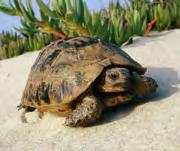
1 Look at these endangered animals. Match each description to the correct animal and the correct question.
Keys
Check the digital resources available at anayaeducacion.es
Keep in mind
• All human activities produce changes in ecosystems. Ecosystems have the capacity to react and offset these disturbances as long as they are moderate and slow.
Pacific Ocean Polar bear Arctic

I suffocate from eating plastic in the sea.
Humans take my horn and use it for medicine.
I can’t hunt for food because the ice is melting.
2 Make cards with the pictures of the animals and the information about them. Then, tell your classmates about them.
3 Brainstorm ideas and make a poster with five tips for reducing damage to the environment.
To learn how to create digital content, see worksheet 2 from the ICT Plan at anayaeducacion.es
What animal is it? Where does it live? Why is it endangered? CHECK

Human activities cause problems in many ecosystems, and some are disappearing.
Complementary activities
To arouse curiosity and broaden learning
• You have probably heard the term ‘climate change’ countless times. Can you explain in your own words what ‘climate change’ means?
Suggested answer: The IPCC (Intergovernmental Panel on Climate Change) defines climate change as a persistent change in Earth’s climate.
• Scientists who study Earth’s climate say that the ice sheet covering the North and South poles is melting due to global warming. Research this topic and tell two consequences for Earth if the ice at the poles melts.
• Steller’s sea cow, giant moa, golden toad. What do these three animals have in common? Research them on the Internet.

Answer: tall three species are animals that have gone extinct due to the direct effect of human action.
75
Resources
Digital resources
Video. ‘The importance of recycling’

Worksheet 5 ‘ICT Plan’
Interactive activities
8 Protecting ecosystems
HoW
THINK
What do you do to protect ecosystems?
1 Look, listen and read. We need to protect resources and ecosystems. We should use natural resources carefully. Everyone can help by living more sustainably.
Recycle
Reuse
Save energy
Answer key
58
3
Separate plastic, glass, paper and cardboard for recycling. Have a shower, not a bath. Turn off taps when you aren’t using them.
Objects made from plastic and other materials.
Save water
2 Choose the correct action for a sustainable lifestyle.
1. When I want some water in a restaurant, I…

Turn off lights and appliances when you aren’t using them.
Respect nature
Respect animals and plants when you visit the countryside. Don’t leave rubbish and never start a fire.
a) ask for tap water in a jug. b) ask for bottled water.
2. In the toilet, I…

a) throw tissues in the bin.
3. During my break, I…



b) flush tissues down the toilet.
a) leave my banana peel on the bench. b) throw my banana peel in the bin. In pairs, make suggestions to take care of the environment.
Do you want to go to school by car?
No, I don’t. It isn’t good for the environment.
Then let’s go by bike!
Yes, that sounds great!
The sustainability code
1 Play the recording and listen. Then, ask pupils to read.

1 Open answer.
2 A-4; B-1; C-3; D-2.
3 Open answer.
3 Watch your pupils’ grammar.
THE SUSTAI n ABILITY Co DE
Do you know this symbol? Gary Anderson designed it in 1971. It’s the international symbol for recycling. The three arrows represent the three steps of recycling: reduce, reuse and recycle.
1 Find objects in your home with this symbol or look for objects on the Internet. Make a list of the objects you find.






2 There are different logos for different sustainable actions. Look at the pictures and match them to their meaning.

A C
B D
Put rubbish in the right place. Use 1 3
plasticrecycled bags. 2 4
3 Work in groups. It’s time to take action!
• Recycle paper, cardboard and packaging.
• Collect toys and give them to charity.
• Turn off taps when you aren’t using them.
• Turn off lights when you aren’t using them.
b) Design a logo for each action. Keep them simple. People need to understand their meaning.
c) Put your logos around your classroom or school to help people be sustainable.
For help using ICT sustainably, see worksheet 5 from the ICT Plan at anayaeducacion.es
NOW I KNOW…
We can do many things to live sustainably: recycle, reuse objects, save water, save energy and respect nature.
Complementary activities
To extend learning
• What types of waste go into the yellow bin? Do you know what is done with the waste that goes into the yellow bin? Visit the link ‘How a waste sorting plant works’ by Ecoembes Spain https://www. youtube.com/ watch?v=_ EA6VL1Zj0s (3 min. duration).
Answer: plastic containers and caps, Tetra Briks, cans, beverage cans, foil wrap and aluminium trays, plastic bags, plastic film, white Styrofoam trays, toothpaste tubes, etc. should be placed in the yellow bin.
Keys + info anayaeducacion.es
ICT
Check the digital resources available at anayaeducacion.es
Keep in mind
• Humans have become aware of the damage we are causing nature, and we already have scientific and technological solutions to try to reverse the problem.
• Although not included in the unit, the pupils could be told that for years many countries have been setting up mechanisms to protect their most valuable ecosystems. In Spain, the most common types of protection are national parks, natural parks and nature reserves.
• Taking care of ecosystems means taking care of ourselves. In this sense, you can tell the pupils that the degradation of nature is already causing us damage in the form of diseases (associated with pollution, for example), droughts and famines in some places, social inequalities, migratory movements, etc.
• Today, the concept of ecological footprint, which is the impact of our activities on the environment, is widely used. For example, the more waste we generate and the more we pollute, the larger our ecological footprint. Living a sustainable lifestyle would be equivalent to reducing our ecological footprint.
Are you clear about what type of waste goes in which bin? Match with the appropriate bin:
1 Yellow bina) Glass
b) Paper
2 Green beenc) Banana peel
d) Plastic
3 Blue bine) Cardboard
f) Milk cartons
4 Brown bing) Food scraps
Answer: 1: d and f; 2: a; 3: b and e; 4: c and g.
77
My visual summary
This section aims to summarise all the contents the pupils have studied throughout the unit. You may aim your pupils to read the texts of the section aloud to practice pronunciation skills.
MY VISUAL SUMMARY
Ecosystems
An ecosystem consists of: non-living things, living things and the relationships between all these elements.



Non-living things: the air, the sun, climate, water and rocks.
Relationships: the main relationships are feeding relationships.
There are different types of rocks: granite, basalt, slate and limestone.




The rocks in an ecosystem determine the landforms.
Humans and ecosystems
Natural resources are things that we use from nature.


Food

Water
Land
Raw materials
We sometimes damage ecosystems when we use natural resources
Using all the resources
Pollution from smoke, plastic, noise and light.
Occupying space
Separate waste for recycling
Well-being
Extinction of species

Global warming
Looking after ecosystems
Save energy



Reuse objects
Save water

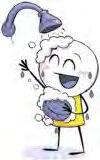

Give toys and clothes to charity
Respect nature

Resources
Digital resources
Unit photo album
Interactive activities
Game room
Inclusion and attention to diversity
The essentials
Reinforcement worksheets 1 and 2
Extension worksheet
Assessment
Test evaluator
Evaluation and competence-based evaluation
Classroom materials
Microscope
STEAM Stars: materials to learn about Maria Sibyla Merian
PORTFOLIO
WHAT HAVE I LEArnED?
1 What is in the school ecosystem? Choose one answer.
a) The building, the playground, and the school’s furniture and objects.
b) The building, the playground, the school’s furniture and objects, and the people.
c) The building, the playground, the school’s furniture and objects, the people, animals and plants, the sun, the air, and the interactions between all these things.
2 Look at the pictures and describe two feeding relationships.
5 Describe three human activities that use these natural resources.
a) Water b) Rocks
c) Trees d) Land
6 Look at the picture and answer the questions.
a) Which things do not belong in this environment?
b) How do these things harm living things?

c) How can we remove pollution from this environment?
7 Match each type of damage to its causes. Suggest actions to prevent each type.
a) Air pollution.
b) Extinction of living things.
c) A lot of waste.
3 Guess the rock in the picture. What type of relief can this rock form?

Answer key
What have I learned?
1 1 c)
2 Feeding relationship 1: flower – snail – lizard – fox

Feeding relationship 2: flower – rabbit – fox
4 Imagine all the plants on Earth disappear. How does this affect the ecosystems? Answer the questions. Explain your answers.
a) What happens immediately?
b) What happens months later?
c) What happens years later?
1. We occupy space and destroy habitats.
2. We use many resources and don’t recycle.
3. Cars cause toxic emissions. Don’t forget to complete your photo album at anayaeducacion.es
Traffic lights. Apply this colour code to each activity in your notebook.
I knew the answer.
I needed help.
I couldn’t answer the question.
5 Suggested answer:
a)Water: drinking, generating electricity, irrigating crops.
b) Trees: getting wood for construction, producing cellulose pulp for paper production, producing fruit.
c) Rocks: building materials, mineral extraction, energy source (coal is a rock).
3 The rock in the picture is a limestone rock, and can form relief with large waterfalls and vertical walls.
4 a) Herbivores and omnivores haven’t got a food source.

b) Herbivores would have starved to death. Imbalances between O 2 production and CO 2 fixation would begin to occur at the planetary level.


c) Land ecosystems would collapse, there would be an imbalance in the gaseous composition of the atmosphere, the climate would change and soil loss would occur due to the absence of vegetation.
d) Soil: building cities, farming to grow food, getting minerals and rocks.
6 a) Rubbish, plastics and other waste such as furniture debris.

b) Water pollution, soil pollution, pollution of the plants on which herbivores feed, damage to fauna as some animals get trapped in plastic or iron, some animals could be poisoned by mistaking the waste for food.
c)Picking up rubbish and waste.

Research a real ecosystem and make a wall display about how to protect it.
1 In groups, follow these steps.
Step 1. Choose an ecosystem like the ones in the pictures.
Step 2. Look for pictures and information about it.
•Which countries have this ecosystem?
• What living things live there? Include animals and other living things.
•Is this ecosystem in danger?

•How can we protect it?
Step 3. Use the pictures and information to make a colourful wall display.
2 Copy and complete the ‘Before, I thought…’, ‘Now, I think…’, organiser in your notebook.
Before, I thought… Now, I think… Reasons
What did I think about ecosystems before?
HoW HAVE I LEArnED?
1 Copy the diagram. Evaluate yourself for each category. Connect the dots to make a pentagon. A big pentagon means you are learning a lot!
What do I think now? Why did my opinion change?
Keys + info anayaeducacion.es
ICT
Make a digital photo album available at anayaeducacion.es
D e v e l o p i n g t h i n k i n g
Applying the reflection technique
‘Before I thought now I think’
Emotional education
Section devoted to metacognition to encourage pupils to identify their emotions in relation to learning.
CONNEcTI ON TO ThE LEARNING Ex PERIEN cE
Using the knowledge they acquired about ecosystems, the pupils will analyse a real ecosystem and prepare a wall display compiling its features, threats and simple proposals to conserve it.
2 Which things did you find surprising or interesting? Explain. How do these things improve people’s lives?
7 a) -3/ b)-1/ c)-2.
Suggested actions: open answer.

Suggestions:
1.Increase the size of protected areas for fauna, flora or landscapes.
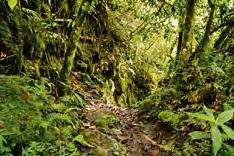

2.Reduce consumption, reuse and recycle.
3.Use public transport or electric means of transport, use bicycles or walk when distance permits.
Target in action: Research a real ecosystem and make a wall display about how to protect it
1 When creating wall displays, it is a good idea to distribute the types of ecosystems in the group in such a way as to generate as much variety as possible. Some ecosystems that can be assigned are: desert, jungle, forest, polar, lake, sea and coral reef. The most important thing when preparing the wall
Next, using the ‘Before I thought, now I think’ thinking technique, the children will analyse their own perceptions, opinions and discoveries about ecosystems and fill in a graphic organiser with their conclusions.
display is that the pupils use sources of information that they understand and do not simply write down data without understanding what they mean. The wall displays are expected to be very different from each other, but they should all contain real examples of the assigned ecosystem and several coherent measures that can contribute to protecting it. They do not have to be complicated proposals but instead ideas like: do not cut down trees, do not hunt endangered animals, do not take sand from the desert, do not throw rubbish into the sea or lakes, etc. Once they have been prepared, each team can present their display to the rest of the class and exhibit it in a visible place.
2 In the graphic organiser ‘Before I thought, now I think’ there are no right or wrong opinions, but it is important to guide the pupils so that they try to identify why they think what they think, encouraging them to reflect on how their own thinking is shaped.
PORTFOLIO
WHAT HAVE I LEArnED?
1 What is in the school ecosystem?
Choose one answer.
a) The building, the playground, and the school’s furniture and objects.
b) The building, the playground, the school’s furniture and objects, and the people.
c) The building, the playground, the school’s furniture and objects, the people, animals and plants, the sun, the air, and the interactions between all these things.
2 Look at the pictures and describe two feeding relationships.
5 Describe three human activities that use these natural resources.
a) Water b) Rocks
c) Trees d) Land
6 Look at the picture and answer the questions.
a) Which things do not belong in this environment?
b) How do these things harm living things?

c) How can we remove pollution from this environment?
7 Match each type of damage to its causes. Suggest actions to prevent each type.

a) Air pollution.
b) Extinction of living things.
c) A lot of waste.
1. We occupy space and destroy habitats.
3 Guess the rock in the picture. What type of relief can this rock form?

2. We use many resources and don’t recycle.

3. Cars cause toxic emissions.
Don’t forget to complete your photo album at anayaeducacion.es
Research
1 In groups, follow these steps.
Step 1. Choose an ecosystem like the ones in the pictures.
Step 2. Look for pictures and information
• Which countries have this ecosystem?

• What living things live there? Include animals and other living things.
• Is this ecosystem in danger?

• How can we protect it?
Step 3. Use the pictures and information to make a colourful wall display.
2 Copy and complete the ‘Before, I thought…’, ‘Now, I think…’, organiser in your notebook.
Before, I thought… Now, I think… Reasons What did I think about ecosystems before? What do I think now?
HoW HAVE I LEArnED?
4 Imagine all the plants on Earth disappear. How does this affect the ecosystems? Answer the questions. Explain your answers.

a) What happens immediately?
b) What happens months later?
c) What happens years later?
How have I learned?
Traffic lights. Apply this colour code to each activity in your notebook.
I knew the answer.
I needed help.
I couldn’t answer the question.
1 Copy the diagram. Evaluate yourself for each category. Connect the dots to make a pentagon. A big pentagon means you are learning a lot!
2 Which things did you find surprising or interesting? Explain. How do these things improve people’s lives?
1 Open answer. Pupils are asked to develop a self-assessment pentagon to illustrate what they have learned this unit.
2 Open answer. When assimilating the contents of the unit, the pupils are expected to make them their own and transfer them to their daily life, while highlighting the information that has attracted their attention the most.



1 Put the animals into their correct ecosystem.
2 Add two more animals to the table for each ecosystem.

3 Choose an animal. Draw it in the box below. Write a description of the animal.
Animal name:






Types of ecosystem it lives in:


Physical description:

1 Label the animals with the following words: cormorant, crab, lizard, mushroom, squirrel, seagull, sea urchine, starfish, sardine and wolf.

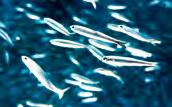





2 Put the animals into their correct ecosystem. Forest ecosystem Coastal ecosystem



3 Complete the table with more animals.
4 Choose an animal. Draw it in the box and describe how its anatomy helps it to live in its ecosystem.
1 Cut out the pieces of the puzzle. Then, assemble them to show a food web.


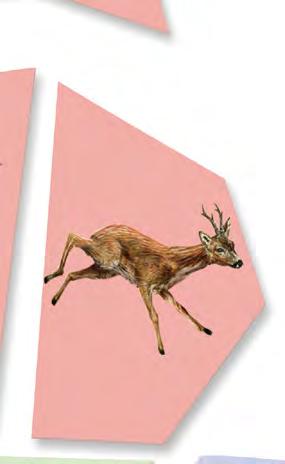




2 When you have completed the puzzle answer the following questions:
1 Is moss a producer or a consumer?
2 Is a snail a carnivore or an herbivore?
3 Do mushrooms only decompose the remains of animals?

1 Cut out the pieces of the puzzle. Then, assemble them to show a food web.
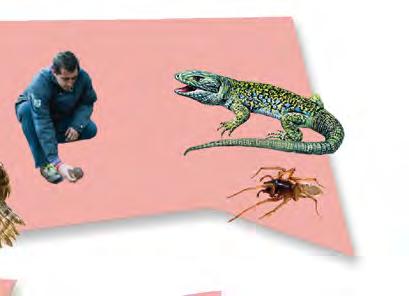






2 When you have completed the puzzle answer the following question: Why is it important that an ecosystem maintains a balance of producers, consumers and decomposers?







Imagine you work as an assistant for an English television documentary program. You must prepare the equipment for three different adventures to three very different ecosystems: one in the arctic, one in the desert and one by the sea. You have to go to the supply room to see what equipment is available and make three lists.
1 Below are items that you have found in the supply room. Write the name of each piece of equipment in the correct column. Some items may be needed on more than one adventure.

Supplies: Arctic Desert Marine
2 Write the definition of these two words: Adapt Survive
3 Some of the equipment will help the film makers adapt to the environment and some are essential to survive in it. Write an A (adapt) or an S (survive) next to each piece of equipment.
A landscape is a section of land on which can appear both natural landmarks and man-made landmarks. Understanding perspective can help you to draw more accurate landscapes.

1 Start by drawing a square with a cross through the centre (picture a). The vertical line will represent the depth of the picture and the horizontal line will represent the horizon.
2 Add two more lines to the square as per picture b.
3 Colour in the bottom triangle with different shades of brown, this will be a path that leads off into the distance. See picture d.
4 Colour in the top half of the square. This will be the sky, you could colour this in blue with white clouds or darker colours to represent a stormy sky. See picture e.
5 Lightly add two more lines to your drawing to the top half of the square (picture c). In this triangular section to the left and right of the picture you can draw trees or buildings or a fence. Follow the lines so that the objects start large and get smaller towards the centre. See picture f.
Reinforcement 1A
Forest ecosystem: lizard, mushroom, squirrel, wolf Coastal ecosystem: cormorant, crab, seagull, starfish, sardine, sea urchin
Example answers: Forest ecosystem - spider and doormouse
Coastal Ecosystem - seaweed and microorganism
Open answer. Check that pupil’s answers are accurate.
Reinforcement 1B
Check pupils’ labelling.
Forest ecosystem: lizard, mushroom, squirrel, wolf Coastal ecosystem: cormorant, crab, seagull, starfish, sardine, sea urchin
Open answer. Check that the animals belong to the correct ecosystems.
Example answers: Forest ecosystem - spider and doormouse
Coastal Ecosystem - seaweed and microorganism
Open answer. Check that pupil’s answers are accurate.
Reinforcement 2A
Check that pupils have put the puzzle together correctly.
1 producer 2 herbivore. 3 No, they also decompose the remains of plants.
Reinforcement 2B
Check that pupils have put the puzzle together correctly.
A healthy balance of producers, consumers and decomposers maintains a healthy food web, which ensures that all organisms within an ecosystem are fed to stay alive and grow.
Extension 1
1 Example answers:
Arctic: sunblock, medical kit, warm clothing, binoculars, ropes and a sled, skis, high energy food, torch, tent and sleeping bag
Desert: sunblock, medical kit, binoculars, solar battery packs, torch, water and rehydration tablets
Marine: sunblock, medical kit, torch, breathing apparatus, swim fins/flippers, waterproof camera
2 Adapt - To adjust/change to different conditions and environments.



Survive - To stay alive.
3 Open answer. Discuss differences of opinion in class.
udl guIdelInes in g l obal THI n KERS
The different elements of the Operation World Project are designed taking the principles of Universal Design for Learning (UDL) into account. The following table shows the relationship between the UDL principles or guidelines and the elements of the project:
GLOBAL T THINKERS UDL guidelines applied in the project PRINTED MATERIAL DIGITAL ENVIRONMENT
Learning experience
SDG
Image and context
What do you think?
Context
«Take action»
• The direct relationship with the SDGs (challenges of the 21st century) and with the daily life of pupils optimises relevance, value and authenticity (7.2).
• An alternative representation of the text facilitates the understanding and the personal connection with the context of the Learning Experience (2.5).
• The questions link the Learning Experience with the pupils' experiences and knowledge (3.1).
• It provides objective and verifiable information about the importance of the target in action (8.1).
• It stimulates collective reflection using a useful thinking strategy which can be used to deal with everyday problems (9.2).
• It encourages independence by proposing a final product which is open to contextualization in the center and allows the pupils to choose (7.1), varying the levels of difficulty (8.2).
• Facilitates generalisation and transfer of essential learning (3.4).
• It promotes community and collaboration for the collective creation and presentation of the final product (8.3).
• Give teachers and pupils access to updated information about the SDGs using various means of communication (5.1).
• What do I know? It suggests traceable interactive activities to detect previous ideas at the start of the unit (3.1).
• It uses audiovisual materials that present learning experiences, stimulating expectations and beliefs that increase motivation (9.1) at the start of the unit.
• In each unit, further information from selected sources is presented in different formats to provide alternatives to auditory (1.2) and visual (1.3) information to represent the text (2.5): songs, subtitled audio or video, locutions of textual information, graphical organisers, visual thinking, etc. also usable to stimulate participation.
Teaching sequence
Follow the thread!
• Essential learning
udl guIdelInes in global action
THinKERs
• It identifies the basic vocabulary (colour, icons, typography) of each unit (2.1).
• It provides examples of good execution and warnings that focus students’ attention (3.2) while minimising uncertainty and distractions (7.3).
• It offers a variety of hands-on materials so students can acquire essential information with multiple media (2.5) and tools (5.2).
• It chooses The essentials of each unit (3.2) and provides interactive printable outlines or summaries (3.3) of the basic knowledge of each unit that allow the presentation of information to be customised (1.1).
• Application activities
• It provides clear and well-structured definitions of concepts (2.2) and presents them with different types of graphic organisers that represent key ideas and their relationships (3.2) in a progressive way between grades (3.3).
• It incorporates systematic practice and review that encourage the generalisation of learning (3.4).
• It complements the written text through multiple media as support to present the basic information with presentations or videos (2.5).
• It offers support to exercise basic information with traceable interactive activities in each unit, using support tools and technologies (4.2).
• Competence activities
• It incorporates activities that allow for open-ended personal responses that encourage participation, experimentation, problem-solving and creativity (7.2).
• It provides models and support through strategies and thought keys that facilitate information processing and its transformation into useful knowledge (3.3).
• It encourages peer tutoring and interaction through cooperative learning techniques (8.3).
• It provides process models and support and outcome testing guidelines (6.1.) to support planning and strategy development (6.2) and facilitate information and resource management (6.3).
– Infographics Language Plan.
– ICT infographics.
Additional resources
• Inverted classroom
• It provides alternative methods for learners to access information and interact with the content (4.1).
• It provides alternatives for responses and navigation (4.1) through videos and a variety of technological tools (4.2), complementing the written text through multiple media (2.5).
• Quarterly review (fun)
• Gamification
• Attention to diversity
• It uses multiple media as alternative means of expressing what students have learned (5.1).
• It defines competences with graduated levels of support for practice and performance (5.3) at varying levels of demand (8.2) with reinforcement, extension and multilevel activities in each unit.
• It uses multiple tools for construction and composition (5.2).
• IN.ON allows the information to be personalised so it can be adapted to the different characteristics and educational needs of students (1.1) and offers alternative auditory (1.1) and visual (1.2) information.
Assessment
GLOBAL T THINKERS
What have I learned?
• Assessment activities
UDLguidelines applied in the project PRINTED MATTER DIGITAL ENVIRONMENT
• It stimulates self-assessment and coassessment by providing a variety of assessment instruments and activities (9.3).
• It stimulates self-assessment and coassessment (9.3) with non-traceable interactive activities with supporting tools and technologies (4.2).
• It increases the ability to track progress (6.4):
– Interactive, traceable, peer assessment tools and activities.
– Generator of assessment and exercise tests by performance levels (basic/ advanced) at different points in the annual curriculum (start, during, end) (5.3).
– Competence assessment.
– GYM Competences: tables and solutions.
• Response to the «Take action»
• It maximises the transfer of learning to new contexts and situations (3.4).
• Printable digital portfolio that allows the presentation of the information (1.1) in each unit to be personalised, increasing the students’ ability to continuously monitor their progress (6.4) through self-assessment and reflection (9.3) and the use of feedback to guide better performance (8.4).
How have I learned?
Interdisciplinary project
• Think
• Design
• Build
• Present
• Test
• It stimulates attainment and improvement through self-regulation strategies that allow students to face challenges with relevant information about their personal strengths and error patterns (9.2).
• It maximises the transfer of learning to new contexts and situations (3.4).
• It incorporates activities that allow for openended personal responses that encourage participation, experimentation, problemsolving and creativity (7.2).
• It provides instructions and support to visualise the process and expected results in order to achieve the project’s end product (6.1).
• It encourages peer tutoring and interaction through cooperative learning techniques (8.3).
Interdisciplinary project
• It shows the importance of goals and objectives by relating the curricular elements linked to essential learning (specific competences and assessment criteria) and the basic information in each unit with the exit profile of the key competences of the grade in the PD (8.1).
• It facilitates self-assessment and coassessment by providing teaching practice assessment instruments (9.3).
¡Cuidemos la naturaleza!
Los bosques proporcionan alimento y refugio a numerosos seres vivos, y son esenciales para el mantenimiento de la vida en la Tierra.

Vocabulario
Ecosistemas Ecosistemas andaluces
Seres vivos
Medio Relaciones
Componentes no vivos
Rocas Relieve
Recursos naturales Daños en los ecosistemas
Alimentos Agua Terreno Materias primas Bienestar

Agotamiento de recursos
Contaminación
Ocupación de espacios
Cuidamos los ecosistemas
Gestión sostenible
Reciclar


Reutilizar
Reducir
Bosque mediterráneo
Marisma
Playa
Dehesa
Consecuencias
Desaparición de especies



Calentamiento global
Nos preparamos
¿Pueden los seres vivos vivir aislados sin relacionarse con otros seres vivos?
¿Qué necesitan los seres vivos del medio en el que viven?
¿Cómo podemos protegerlos para que no desaparezcan?
¿Dónde viven los seres vivos?


Formamos parte de la naturaleza
En la naturaleza podemos distinguir dos componentes:

• Los componentes no vivos o inertes.
• Los seres vivos.
Estos componentes, además, están relacionados entre sí.
Un ecosistema es el conjunto formado por los componentes no vivos del medio, los seres vivos y las relaciones que se establecen entre todos estos elementos.
Las relaciones en el ecosistema
Los seres vivos de un ecosistema establecen entre ellos diferentes tipos de relaciones. Las más importantes son las relaciones alimentarias.
Las cadenas alimentarias son unos esquemas que representan estas relaciones indicando, con flechas, quién se come a quién.
1 En parejas, observad la imagen del ecosistema de esta página e id diciendo nombres de los seres vivos y de los componentes no vivos que lo forman. Por ejemplo: El ñú es un ser vivo, el agua es un componentes no vivo, etc. A continuación forma una cadena alimentaria con tres animales que aparezcan en la imagen.
Ejemplo de cadena alimentaria
La planta sirve de alimento al saltamontes El saltamontes sirve de alimento al lagarto.


El lagarto sirve de alimento al águila

Los componentes no vivos de los ecosistemas
Algunos componentes no vivos de un ecosistema son el aire, el sol, el clima, el agua y las rocas. Vamos a centrarnos en las rocas, ya que son el soporte sobre el viven los seres vivos.
Las rocas forman parte del ecosistema
Las rocas son los materiales que forman el terreno sobre el que vivimos.

En la naturaleza hay muchos tipos de rocas que se diferencian por su aspecto, por su color y por como aparecen en la naturaleza .


Las rocas y el relieve


Según el tipo de rocas que encontremos en los ecosistemas podemos tener diferentes formas del terreno.
El relieve es el conjunto de las diferentes formas del terreno.
Fíjate en las imágenes del granito y la caliza. ¿En qué crees que se diferencian?
Granito Caliza2 Observa las imágenes y escribe una redacción describiendo cómo es el relieve. ¿Qué tipo de rocas lo forman?

3
¿Cómo son los ecosistemas andaluces?
Los ecosistemas pueden ser terrestres o acuáticos. También se pueden clasificar en ecosistemas naturales, que no están alterados por el ser humano, y ecosistemas humanizados, modificados por los seres humanos.
Algunos ecosistemas andaluces
Bosque mediterráneo

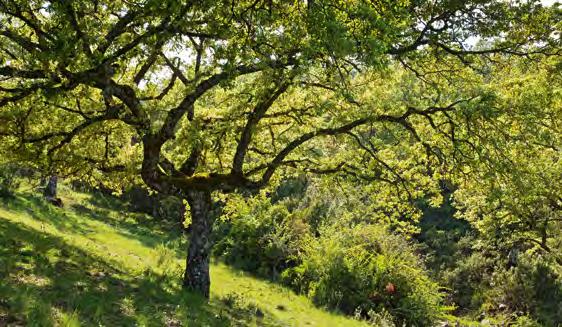
Plantas: encinas, alcornoques, jaras, romero...
Animales: insectos, lirones, conejos, ciervos, jabalíes, aves, linces...

Playa
Plantas: salicornia, siempreviva, arenaria...

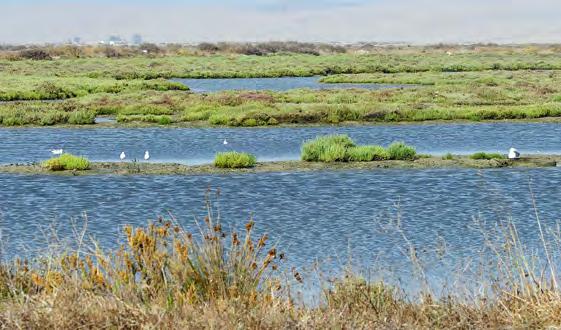
Animales: aves acuáticas, peces, medusas, cangrejos, estrellas y erizos de mar, pulpos....
Marismas
Plantas: carrizos y juntos.
Animales: aves acuáticas (patos, garzas, etc.), peces e invertebrados.
Dehesa
Plantas: encinas separadas y pasto.
Animales: rapaces, reptiles anfibios y otros propios de la actividad ganadera como los cerdos.
1 Clasifica los ecosistemas andaluces de las fotografías: ¿Cuáles son terrestres y cuáles acuáticos? ¿Cuáles son naturales y cuáles humanizados?
2 Dibuja un ecosistema de tu comunidad que hayas visitado. Escribe un pequeño texto describiendo los animales o plantas que viste.
Las personas formamos parte de los ecosistemas
Llamamos recursos naturales a todo lo que aprovechamos de la naturaleza para cubrir nuestras necesidades. Son, principalmente: alimentos, agua, espacios (terreno), materias primas y bienestar.
¿Qué daños estamos provocando?
Al utilizar los recursos naturales, alteramos los ecosistemas :
• Agotamos los recursos, los sobreexplotamos
• Contaminamos de los ecosistemas con humos, plásticos, ruidos, luz, etc.
• Ocupamos mucho espacio y reducimos el que necesitan los seres vivos.
Esos daños originan graves consecuencias en los ecosistemas porque provocan la desaparición de seres vivos y el calentamiento global del planeta.
Cuidamos los ecosistemas
Para conservar los ecosistemas debemos hacer un sostenible de los recursos. Todas las personas podemos ayudar a alcanzar este objetivo llevando un estilo de vida sostenible.
Consejos para llevar un estilo de vida sostenible
Recicla...




... separa el plástico, el vidrio, el papel, el cartón, etc. para que se puedan reciclar.
Ahorra agua...

... dúchate en lugar de bañarte, cierra los grifos cuando no los utilices.
Ahorra energía...
1 Escribe la definición de estos términos: extinción, sobreexplotación, vida sostenible.
2 Elige uno de los ejemplos de la imagen y explica cómo puedes aplicar un estilo de vida sostenible: bolsas de plástico, hojas de papel, ropa.
Reutiliza...
... los objetos, sobre todo los de plástico, para darles otra función.



... apagando las luces y los aparatos que no estés usando.
Respeta la naturaleza...
... cuando salgas al campo; respeta los animales y las plantas, recoge los desperdicios y nunca enciendas fuego.
NOS PONEMOS EN ACCIÓN
Elaboramos un plan para proteger el planeta Nos

Comienza nuestra misión: ¡salvar el planeta! En grupos, vamos a elaborar un plan de 10 acciones que cada uno podamos llevar a cabo para proteger el planeta. En primer lugar, pensad acciones que realizamos cada día y que puedan tener impacto en los ecosistemas:

• El transporte.
• La alimentación.
• La utilización de los aparatos eléctricos.
• El consumo de papel. 2

¿Cómo podemos hacer que esas acciones del día a día sean más respetuosas con el planeta?
• Entre todos pensad 10 formas de proteger el planeta y llevar un estilo de vida más sostenible.

• Redactad un contrato con el planeta Tierra en el que os comprometáis a cuidarlo y protegerlo. 3
Ahora podemos convertirnos en guardianes del planeta. Para ello podemos formar ‘patrullas sostenibles’ en el colegio o en nuestra casa que se encargarán de ayudar e informar al resto de la familia o del colegio de las tareas que hemos establecido para cuidar el planeta.
• ¿Hemos logrado depositar la basura en el lugar adecuado?, ¿hemos conseguido donar las cosas que ya no usamos?, etc. 4
Diseñad un carné de guardián del planeta con vuestro nombre. Preparad más carnés para dárselos a las personas que hayan colaborado en la protección del planeta.
Clasificaré la basura según sea orgánica, plástico, papel, etc. Cerraré los grifos si no estoy usando el agua. No compraré alimentos que vengan con envases innecesarios. Apagaré las luces que no esté usando. Compraré productos locales.

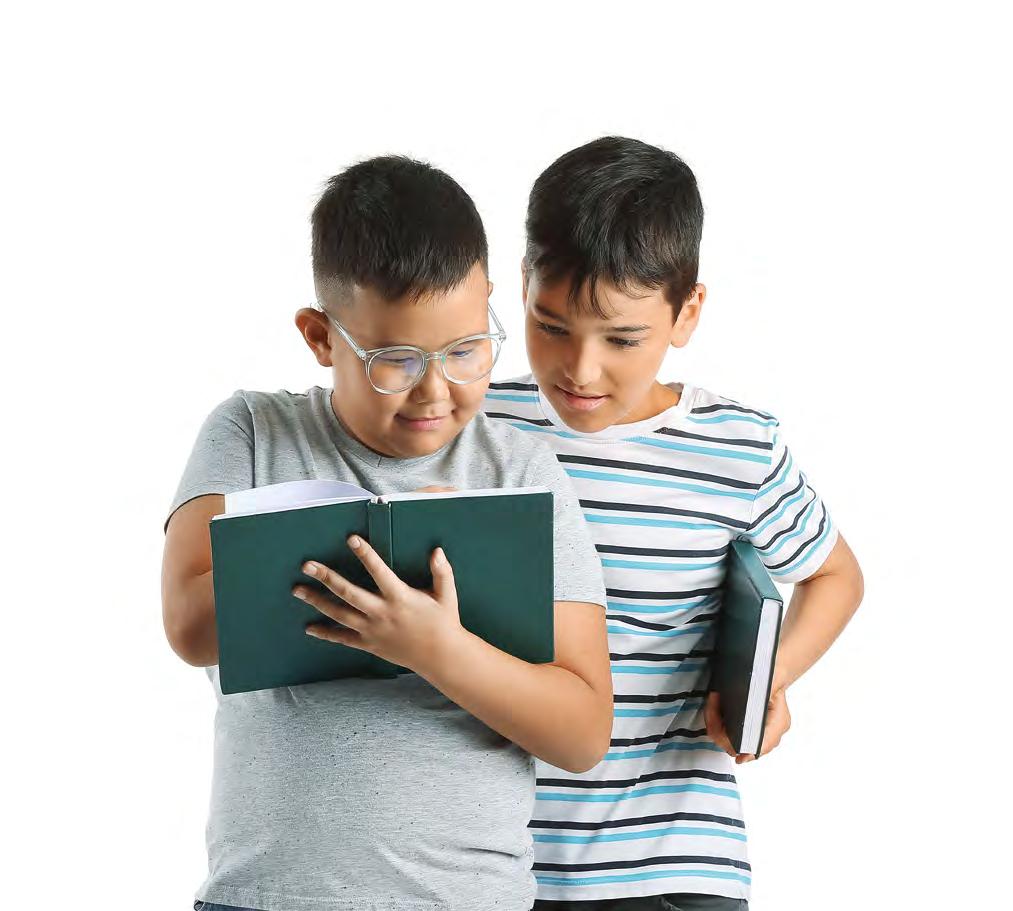

What is the exe Rc I se a N d assessmen T tes T generator?
It is a practical and effective tool, that is capable of preparing all the assessment tests required during the course. It provides printed tests, that are ready to be distributed to pupils.
The Anaya website offers the possibility of carrying out different assessment tests in a simple way, without requiring specialised computer knowledge.
h oW does i T work?
Selecting the "Assessment" option will display a menu.
Once you have accessed the tool as described in the previous section:
1 A screen will appear showing the content blocks of the course. Clicking on them displays specific basic knowledge.
2 You can select everything you want to include in the assessment test. When doing so, they are displayed in the summary box on the right, and can be deleted if needed. Once the desired content has been selected, all you have to do is click on the Generate test button and choose how many different assessments you want to generate.
3 The tool will automatically create the tests and display them on the screen. All that is left is to print them, which can be done including the answers.
4 Another option that the tool offers is Custom Test. This option allows you to preview the available activities before selecting them to generate the test.





What is the Game Room?

Game Room is a gamified and digital end of term assessment inspired by the Sustainable Development Goals. Its design, based on storytelling, offers pupils a playful and motivating interdisciplinary experience.


In each scenario you will find a character who needs your help.
Pay attention to complete the missions.
You will use the Dolter to search for hidden items and progress through the story.





What is UlT ima T e Travel L e Rs?

DOC will contact you through Hermes when you need a clue.
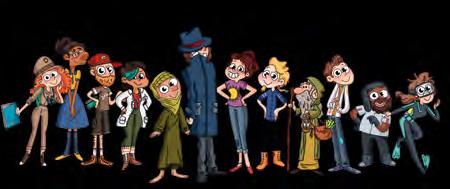
It is a great game in which pupils interact with the characters and settings. The exploration, conflict and action take place on Isla Ámbar. Under a common goal, pupils will advance through personalised scenarios, viewing narrative videos, communicating with characters, answering quiz-type questions, and solving more complex games. They will do so within a framework of positive reinforcement, identifying their progress through the progress bar and receiving feedback on the process.









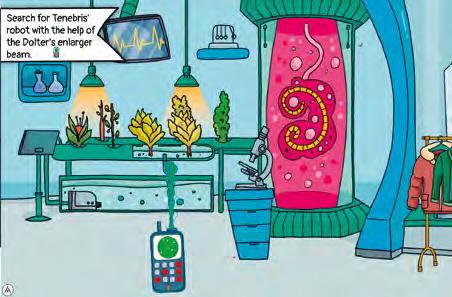
1 Name the five senses.
2 Look at the images on the right. Explain how we breathe.
3 What transports the oxygen we breathe around our bodies?


4 Explain what the skeleton is.
5 What do these things give us?
a)Fruit and vegetables
b)Rice, pasta and bread
c)Fish, meat and eggs
6 Answer the questions.
a) What does the root of a plant do?
b)Where do plants make their food?
c)According to the stem, plants can be trees,
7 Look at the picture of the animal on the right.
a)Is it a vertebrate or an invertebrate?
b)Is it a fish, amphibian, reptile, bird or mammal?
8 Look at the picture of the animal on the right.
a)Is it oviparous or viviparous? Why?
b)What type of animal is it according to what it eats?

9 Name two things you can do to protect nature.
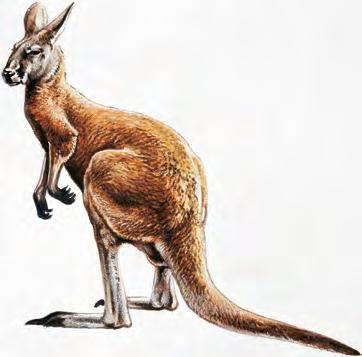
Initial evaluation
Sight, hearing, smell, taste and touch.
We inhale air, preferably through the nose, and the air reaches our lungs. Our lungs expand. When we exhale, our lungs get smaller again.
Circulatory system.
All the bones in a body
a)Fruit and vegetables give us vitamins.
b)Rice, pasta and bread give us energy.
c)Fish, meat and eggs give us protein.
a)It absorbs water and mineral salts.
b)In its leaves.
c)bushes or grasses.
a)Vertebrate
b)Mammal
a) Viviparous, because it develops inside the mother’s body.
b)Herbivore
Open answer. Recycling and saving energy are possible answers.
1 Write three types of flora and fauna that you find in a forest ecosystem.
Flora Fauna
2 Match the pictures to the different types of the adaptation.
1
2
3
a) These animals are difficult to see because they are camouflaged. Their skin is the same colour as the environment where they live.
b) These animals have large eyes to be able to see well at night.

c) These animals have thick fur coats and layers of fat to keep them warm.

3 Why might an animal have very bright colours instead of camouflage?

4 Read the descriptions. Is it a consumer, a producer or a decomposer?
1 They make food through photosynthesis.
2 They feed on living organisms.
3 They decompose dead or decaying organisms.
Write if they are consumers, producers or decomposers.
1 mushrooms 2 a crocodile 3 a rose4 a parrot
6 Match the words to their description, then also to the picture of the organism that represents that type of consumer.

Consumer that only feeds on meat.

herbivores
omnivores
carnivores

Consumers who feeds on both meet and plants.
Consumer that only feeds on plants.
7 Complete the table with the options below.
Changes that don’t alter ecosystemsChanges that alter ecosystems
Animal migration Building
Excessive hunting and fishing
Normal changes in weather conditions
8 Name four resources that humans take from ecosystems.
Floods and forest fires
Temperature variations between night and day
9 Circle the ways that we can protect ecosystems. build more protect natural areas recover damaged ecosystems overfish reduce pollution live in a more balanced way consume less release harmful waste buy more goods

PHOTOCOPIABLE ANSWERS
Science 3
Unit evaluation
1 Example answer: Flora - grass, moss and pine trees Fauna - squirrels, birds and deer
2 1 b) 2c) 3a)

3 Example answer: to attract members of the opposite sex in order to reproduce, to communicate with each other or to distract prey or predators.
1 producer
2 consumer
3 decomposer
5 1 decomposer 2 consumer 3 producer
4 consumer
6 herbivore - consumers that only feed on plantscow omnivore - consumers who feed on both meat and plants - human carnivore - consumers that only feed on meatlion
7 Changes that don’t alter ecosystems: temperature variation between night and day, normal changes in weather conditions, animal migration
Changes that alter ecosystems: floods and forest fires, excessive hunting and fishing, pollution, building
8 Example answers: wood, water, food, fuel
9 protect natural areas, recover damaged ecosystems, reduce pollution, live in a more balanced way, consume less.
CurrICuLumStruC
rElAtIonShIpS bETwEE CurrICuluM ElEMEnTS
GLoSSAr

DIDACTIC Progr AM mE
DEMO DIDACTIC ProgrAMmE
lOMLoE rEguLaTIOnS

LOMLOE
PRINCIPLES AND PURPOSES OF EDUCATION (LOMLOE, ARTICLES 1 AND 2)

KEY COMPETENCES (EU COUNCIL, 2018)
CC PSLLC
8 competences
Civic competence
Multilingual competence
Competence in linguistic communication
Personal, social and learning-to-learn competence
Sense of initiative and entrepeneurship
Digital competence
Cultural awareness and expression competence
Regulations tell us which key competences and specific competences must be acquired to achieve these stages.
TARGETS
OUTPUT PROFILE Curr IC u L um S tr u C tur E
OPERATIONAL DESCRIPTORS OF KEY COMPETENCES
Together with the objectives, they are the referential framework that specify the specific competences.
AREAS
SPECIFIC COMPETENCE
Their performance connects key competences, basic knowledge and evaluation criteria.
EVALUATION CRITERIA
References that verify the level of performance of specific competences, that are worked on in the activities, and learning experiences.
LEARNING EXPERIENCES
Well-contextualised problems, that must be resolved in a creative and effective way by using the implementation or transference of skills and knowledge that pupils have acquired. In addition, these situations take into account basic knowledge (content) of one or several areas (interdisciplinary) that are evaluated through the assessment criteria.
BASIC KNOWLEDGE / CONTENT
Specific competences are developed through this content.

OPERATIONAL DESCRIPTORS

TARGETS
KEY COMPETENCES
AREAS
SPECIFIC COMPETENCES
ASSESSMENT CRITERIA
BASIC KNOWLEDGE / CONTENT
LEARNING EXPERIENCE
Targets
These are the achievements that pupils are expected to have reached at the end of the stage. These achievements are linked to the acquisition of key competences and specific competences.
There are only stage targets, they are not applicable to area, subject or scope.
Key competences
These are the performances that are considered essential for pupils to progress with guarantees of success in their training itinerary and to face the main global and local challenges.
The key competences are:
• Competence in linguistic communication
• Multilingual competence.
• Competence in mathematics, science, technology and engineering.
• Digital competence.
• Personal, social and learning-to-learn competence.
• Civic competence.
• Sense of initiative and entrepreneurship.
• Cultural awareness and expression competence.
Output profile
At the end of basic education, a pupils’ output profile is the element in which the principles and goals of the educational system are specified.
It identifies and defines the key competences that pupils are expected to have developed upon completing the different stages.
Operational descriptors
Together with the stage’s objectives, they constitute a frame of reference for the specific competences of each area, field or subject.
This link between operational descriptors and specific competences makes it easier to assess specific competences and to determine to what degree the key competences defined in the output profile have been acquired and, therefore, the achievement of the competences and the objective set for that stage.
Specific competences
They define what pupils must be able to deploy in activities or in learning experiences. Their approach requires basic knowledge of each area, subject or field.
The specific competences have an element of connection between pupils’ output profile and the assessment criteria and basic knowledge of the areas or fields.
They function as stage competence objectives.
They are formulated with this syntactic structure: what (infinitive) + how (gerund, through…) + why (for+infinitive).
Assessment criteria
They are the benchmarks that indicate the levels of performance expected of pupils in the situations or activities to which the specific competences of each area refer at a given moment in their learning process.
Basic knowledge/content
The knowledge, skills and aptitudes that constitute the content of an area or field, and whose learning is necessary for the acquisition of specific competences.
Learning experiences
Situations and activities that require pupils to deploy key competences and specific competences and that contribute to their acquisition and development.
They involve the transference of learning acquired by the pupils and, therefore, represent an effective tool to integrate curricular elements from the different areas or subjects.
The aim of them is to offer pupils the opportunity to connect their learning and apply it in contexts that relate to their daily lives, favouring their commitment to their own learning.
A fundamental principle with the aim of meeting all pupils’ diversity of needs. For this, barriers that reduce access, presence, participation and learning of those who are in a situation of socio-educational and cultural vulnerability must be eliminated.
Universal Design for Learning (UDL)
An approach based on making the curriculum more flexible, so that it is open and accessible and provides all pupils with equal opportunities to learn.
UDL implies that we set our sights on ability and not on disability. That is, that we see ways in which the curriculum could be disabling, as we all have our own individual and different abilities.
It gives three fundamental principles and a series of guidelines that should govern our educational practices:
• Provide multiple forms of representation.
• Provide multiple forms of action and expression
• Provide multiple forms of engagement
Sustainable Development Goals (SDGs)
Sustainability is one of the principles and purposes of the LOMLOE. It refers to how we can respond to current needs without compromising the ability of future generations to meet theirs. It guarantees a balance between economic growth, care for the environment and social welfare. It is a concept closely linked to others such as responsible consumption, health, etc.
In this sense, the UN General Assembly adopted the 2030 Agenda for Sustainable Development. It is an action plan in favour of people, the planet and prosperity, which also intends to strengthen universal peace and access to justice. The agenda sets out 17 objectives with 169 goals of an integrated and indivisible nature that cover the economic, social and environmental spheres.
Introduction
Key competences and pupil's output profile at the end of the stage
2.1 Key competences
2.2 Output profile
2.3 Operational descriptors of key competences
Learning experiences
Area
4.1 Specific skills
4.2 Assessment criteria
4.3 Basic knowledge
5.1 Methodological principles for Primary Education
5.2 Active methodologies
Methodological guidelines Inclusion. Attention to pupils' individual differences
6.1 UDL guidelines
6.2 Organisational and curricular measures
Pupil assessment procedures and grading criteria in line with the established methodological guidelines
7.1 Student assessment procedure
7.2 Assessment references
7.3 How to assess?
Assessment of didactic programming and teaching practice
Programación
Muestra programación. Situación de aprendizaje
Primaria. Conocimiento del Medio 3. Situación de aprendizaje 3
Modelo de situación de aprendizaje elaborado según esquema del Proyecto de Orden por el que se desarrolla el currículo correspondiente a la etapa de Educación Primaria en la Comunidad Autónoma de Andalucía. Este modelo podrá sufrir cambios si así lo requiere la normativa definitiva.
CURSO 3º Primaria
Conocimiento del Medio Natural, Social y Cultural
TEMPORALIZACIÓN
10-12 sesiones
SITUACIÓN DE APRENDIZAJE
1.IDENTIFICACIÓN
TÍTULO O TAREA: 3. ¡Cuidemos la naturaleza! Propuestas para conservar los ecosistemas.
2.JUSTIFICACIÓN
El cuidado de los ecosistemas se presenta en esta situación de aprendizaje como eje vertebrador del trabajo del alumnado. Por ello, la conexión que tiene el “Objetivo en acción” con el respeto medioambiental, centrado principalmente en el estudio y cuidado de un espacio natural cercano al alumnado, ayudará a considerar los aspectos más relevantes de la situación de aprendizaje. Entre otros, destacan los saberes vinculados al conocimiento de los ecosistemas, las rocas y el relieve, y lo concerniente a cómo puede alterarse y de qué manera favorecer la protección de los entornos naturales.
Por ello, aparece una clara relación del trabajo con el Objetivo de Desarrollo Sostenible nº 15, Vida de ecosistemas terrestres. En este caso, el abordaje de este objetivo y sus metas se focaliza en los espacios naturales en los que habitan los seres vivos.
En la situación de aprendizaje encontraremos varias propuestas competenciales, facilitando la aproximación al conocimiento y análisis de los ecosistemas. Se presentan experiencias que ayudarán de manera vivencial a comprender que hay componentes no vivos en estrecha relación con los seres que habitan el planeta, actividades sobre el riesgo de extinción de algunas especies animales y una propuesta para aproximarse a las profesiones vinculadas con la conservación del medio ambiente.
3. DESCRIPCIÓN DEL PRODUCTO FINAL
En esta situación de aprendizaje el producto final propuesto es un mural en el que se explica cómo es un ecosistema conocido por el alumnado y cómo puede protegerse.
Con la elaboración de este producto se pretende visibilizar el trabajo competencial del alumnado, facilitando la circulación de los saberes básicos y las competencias clave y específicas de la situación de aprendizaje.
4. CONCRECIÓN CURRICULAR COMPETENCIAS ESPECIFICAS
1. Utilizar dispositivos y recursos digitales de forma segura, responsable y eficiente, para buscar información, comunicarse y trabajar de manera individual, en equipo y en red, y para reelaborar y crear contenido digital de acuerdo con las necesidades digitales del cont exto educativo.
DESCRIPTORES OPERATIVOS: CCL3, STEM4, CD1, CD2, CD3, CD4, CD5, CCEC4. CRITERIOS DE EVALUACIÓN SABERES BÁSICOS EVIDENCIAS Actividades y ejercicios
1.1.a. Utilizar dispositivos y recursos digitales, de acuerdo con las necesidades del contexto educativo de forma segura, iniciándose en la búsqueda de información, a través del uso de estrategias básicas de comunicación, trabajando de forma individual y en equipo y creando con ayuda contenidos digitales sencillos.
CM.02.B.1.1. Dispositivos y recursos digitales de acuerdo con las necesidades del contexto educativo.
CM.02.B.1.4. Recursos y plataformas digitales restringidas y seguras para comunicarse con otras personas. Etiqueta digital, reglas básicas de cortesía y respeto y estrategias para resolver problemas en la comunicación digital.

Todo está conectado (pág. 43) «La madeja que nos conecta» «Te lo cuento en un momento» Algunos ecosistemas andaluces (pág. 48)
Plan TIC-TAC (pág. 55) Ficha «Creamos contenidos digitales» Ficha «Utilizamos las TIC de forma saludable y sostenible».
El símbolo sostenible (pág. 55) ¿Qué he aprendido? (pág. 56) Objetivo en acción.
2. Plantear y dar respuesta a cuestiones científicas sencillas, utilizando diferentes técnicas, instrumentos y modelos propios del pensamiento científico, para interpretar y explicar hechos y fenómenos que ocurren en el medio natural, social y cultural.

DESCRIPTORES OPERATIVOS: CCL1, CCL2, CCL3, STEM2, STEM4, CD1, CD2, CC4.
2.1.a. Demostrar curiosidad por el medio natural, social y cultural que tiene lugar a su alrededor, formulando preguntas, realizando predicciones y comenzando a establecer de forma guiada el razonamiento de estas.
CM.02.A.1.4. Fomento de la curiosidad, la iniciativa y la constancia en la realización de las diferentes investigaciones, así como en la lectura de textos divulgativos científicos.
CM.02.A.1.6. La importancia del uso de la ciencia y la tecnología para ayudar a comprender las causas de las propias acciones, tomar decisiones razonadas y realizar tareas de forma más eficiente.
Página inicial (pág. 40)
Situación de aprendizaje: cómo lo ves, el dato y objetivo en acción.
Todo está conectado (pág. 43) Actividad competencial.
Mi profesión: ingeniero forestal y urbanista (pág. 51) Actividad competencial.
¿Qué he aprendido? (pág. 56) Actividades 4 y 5.

